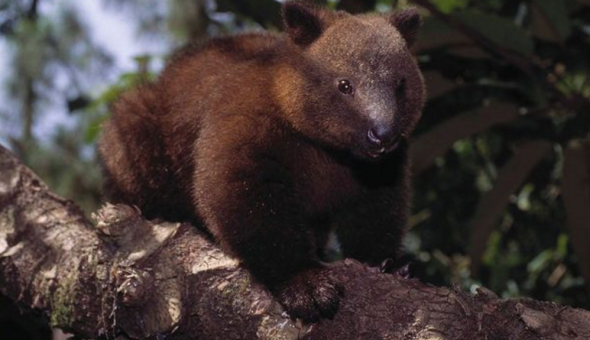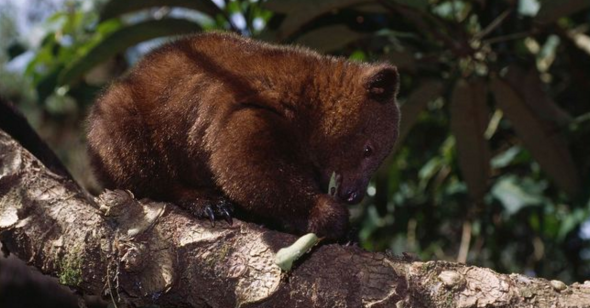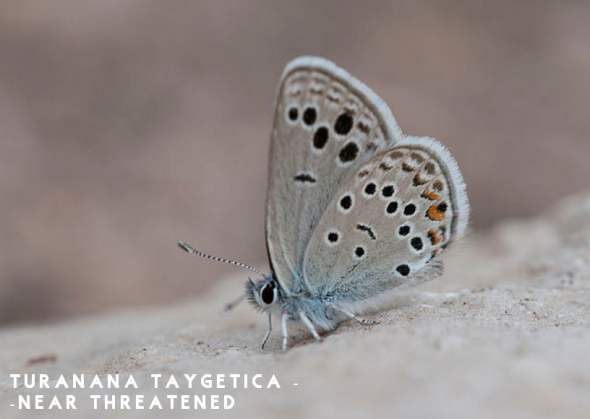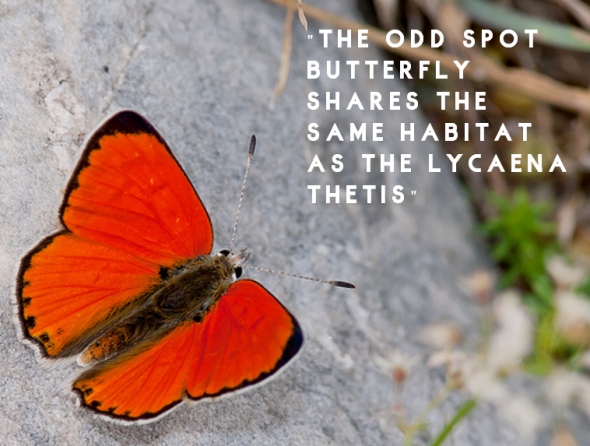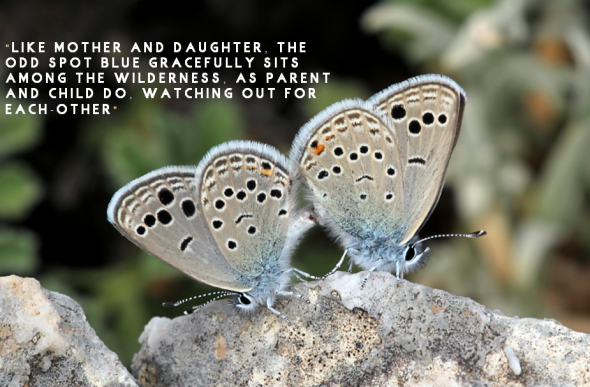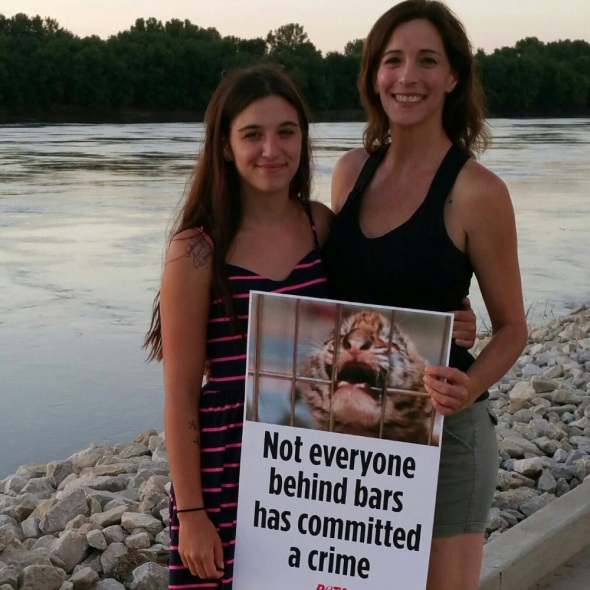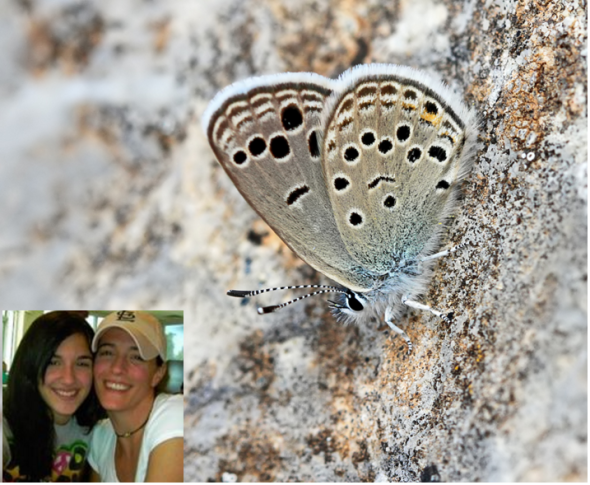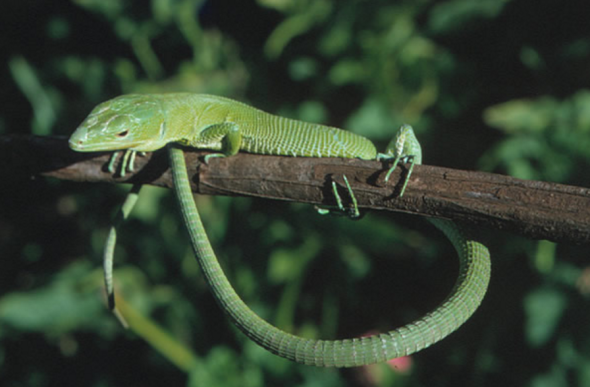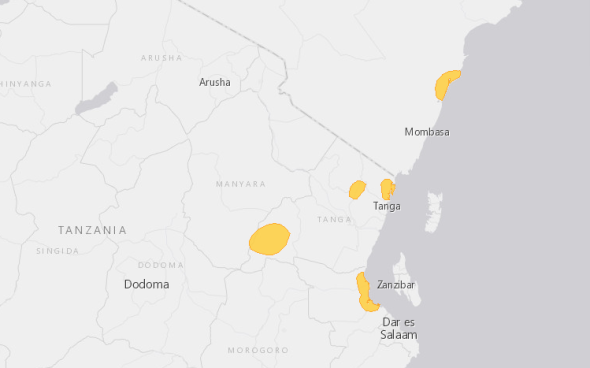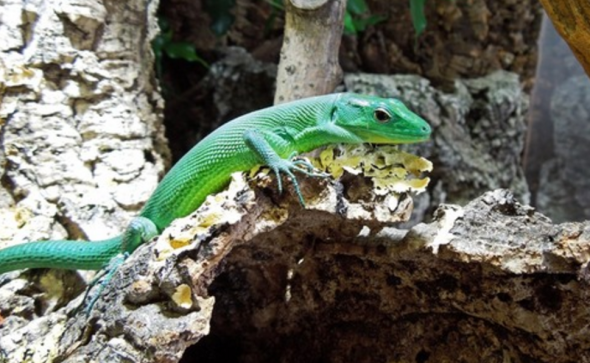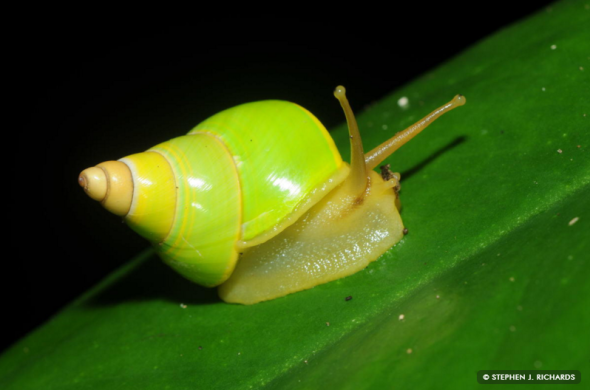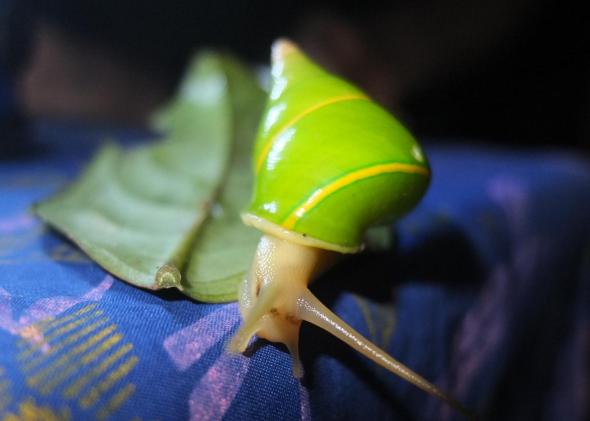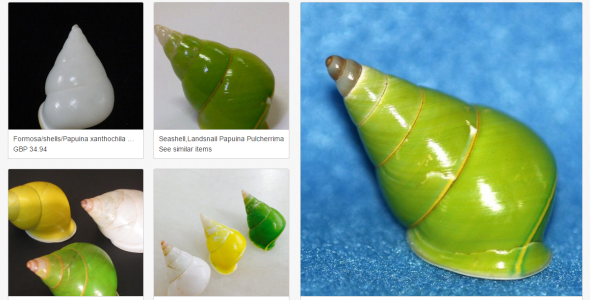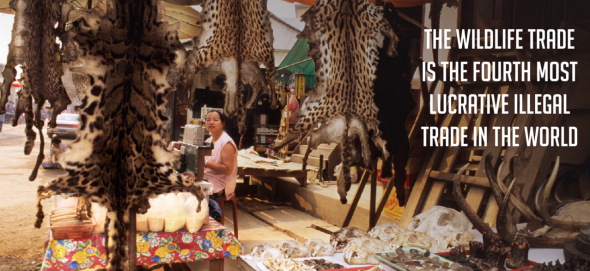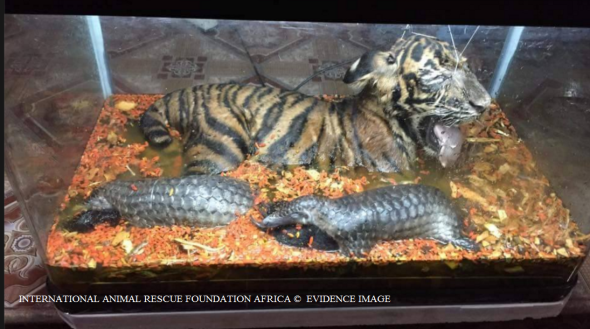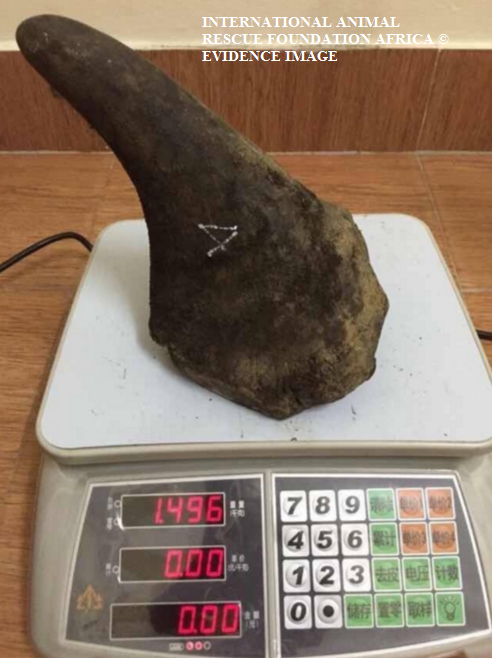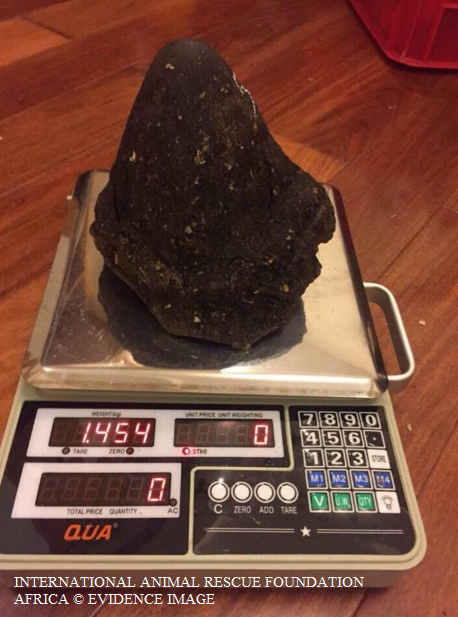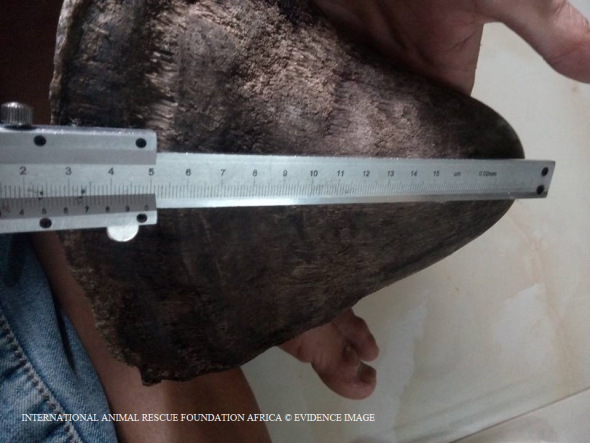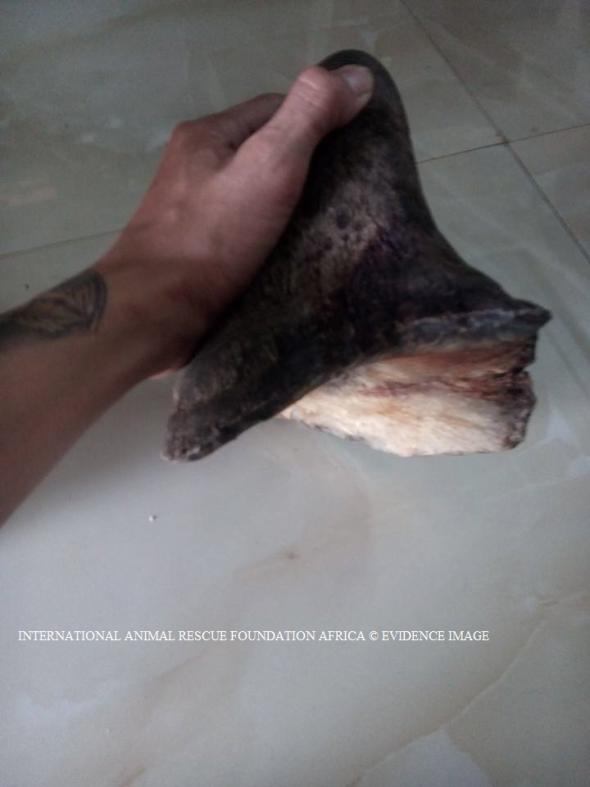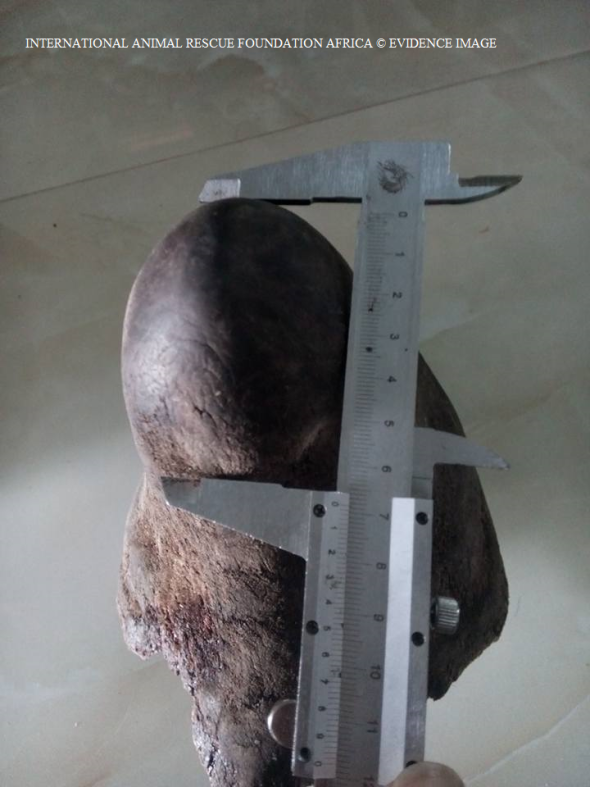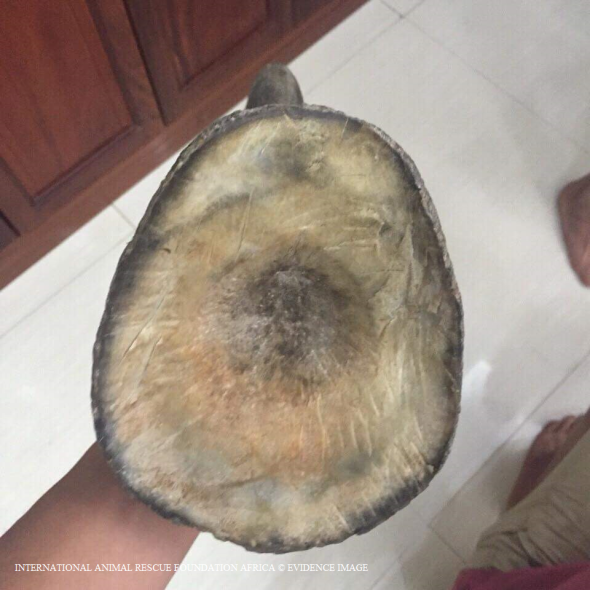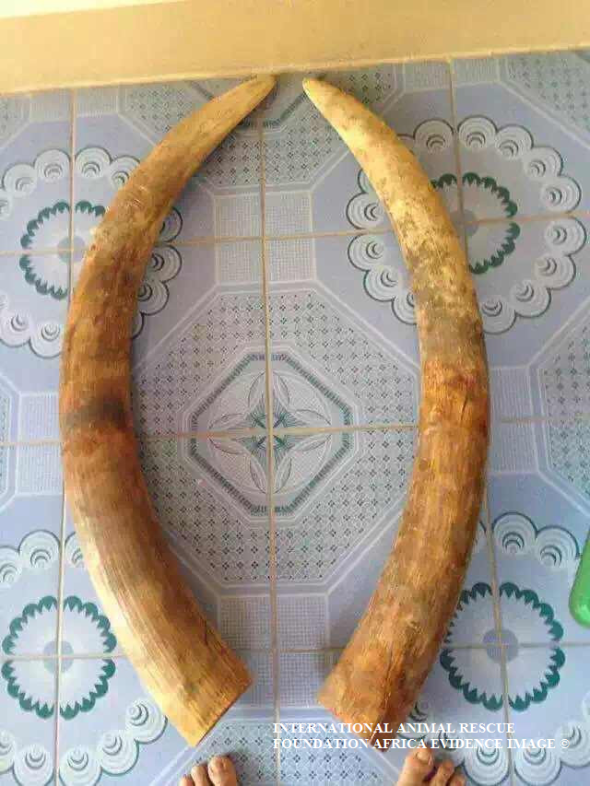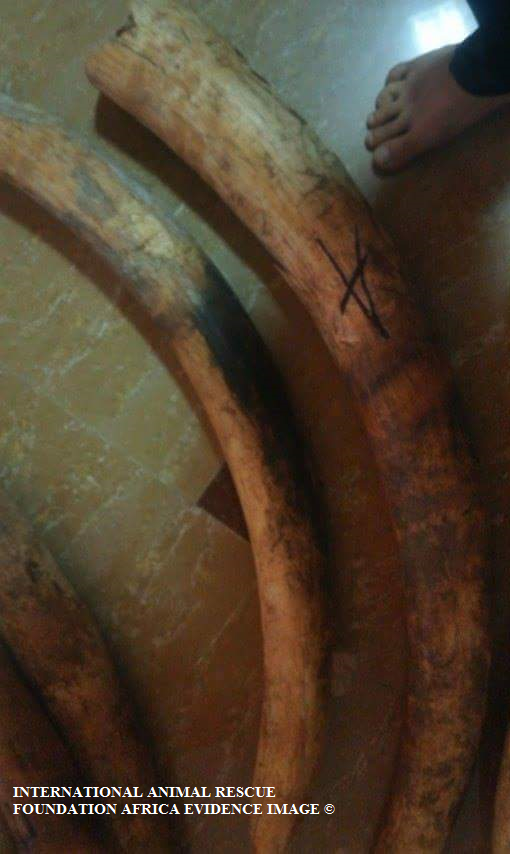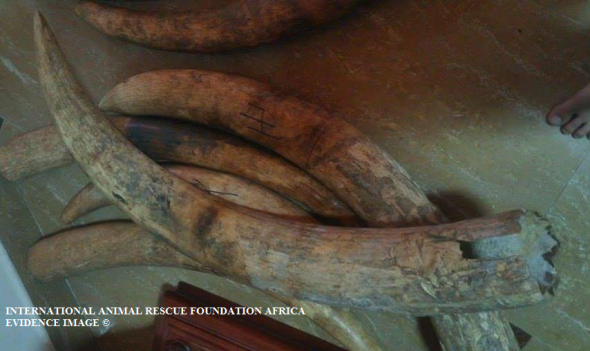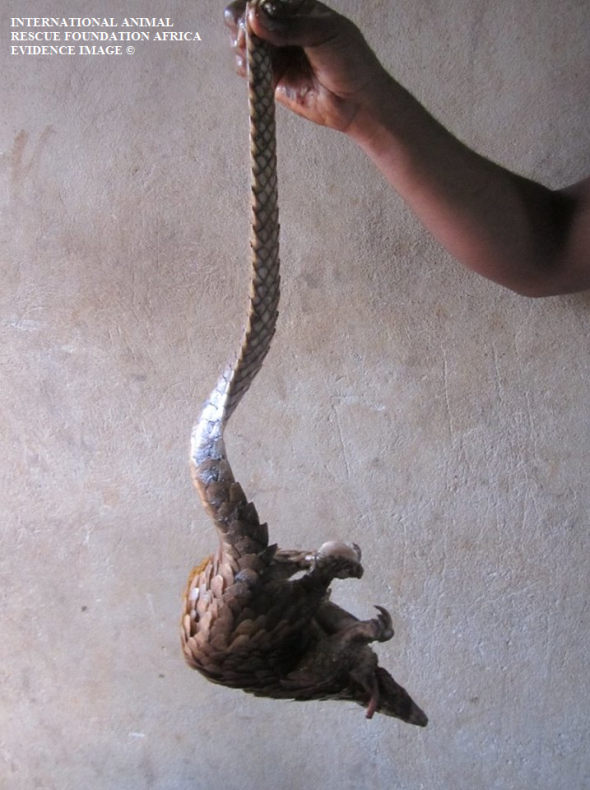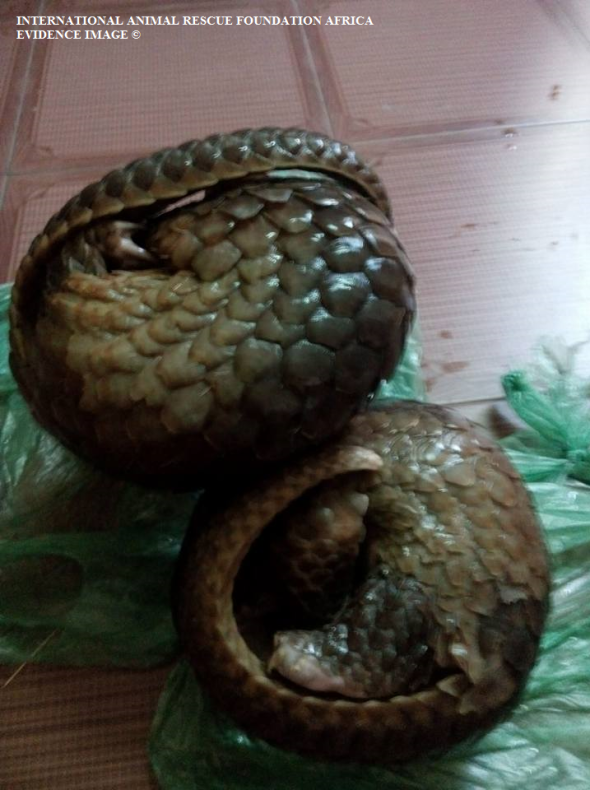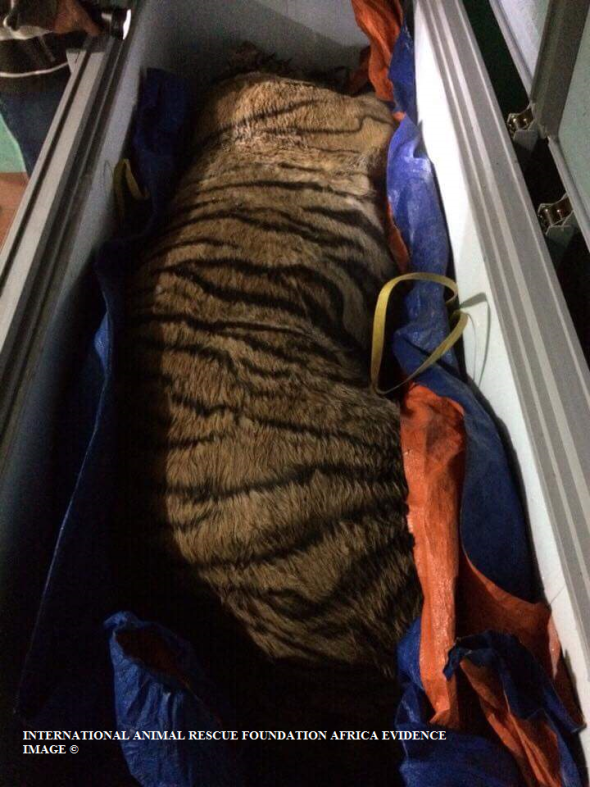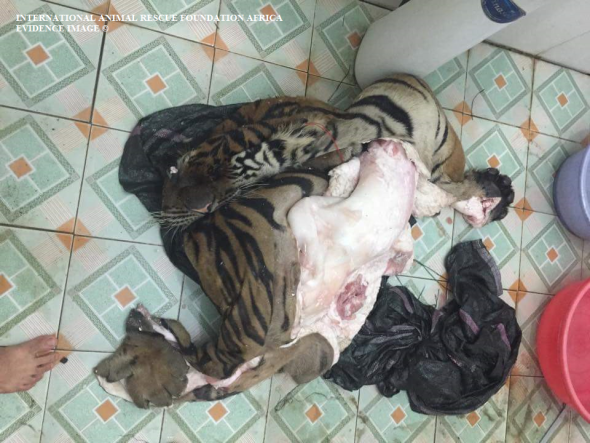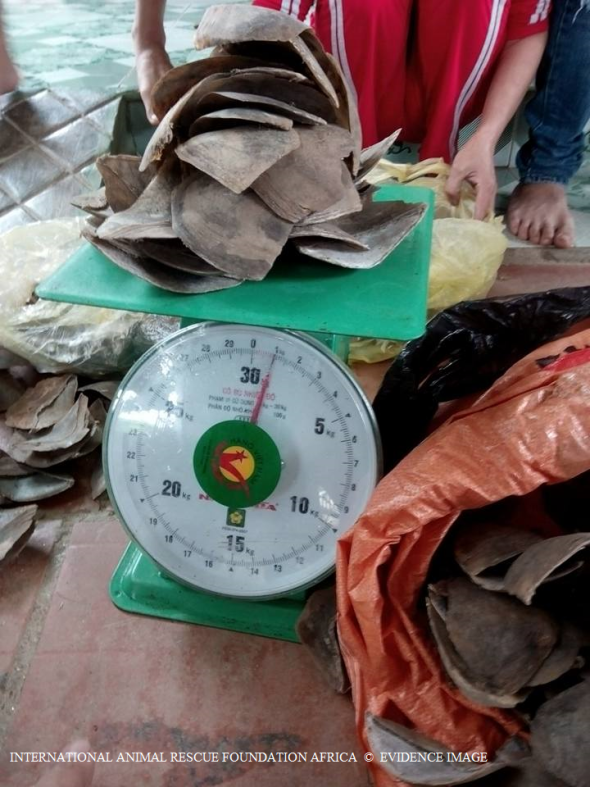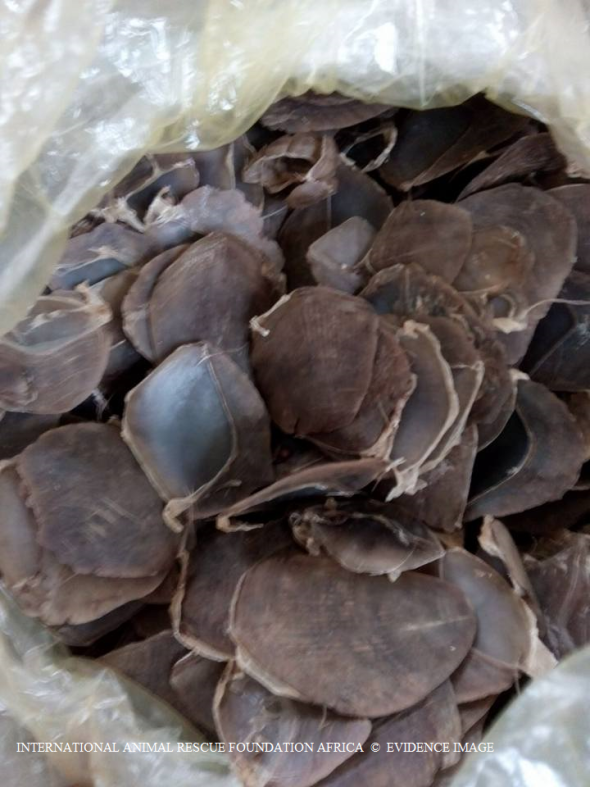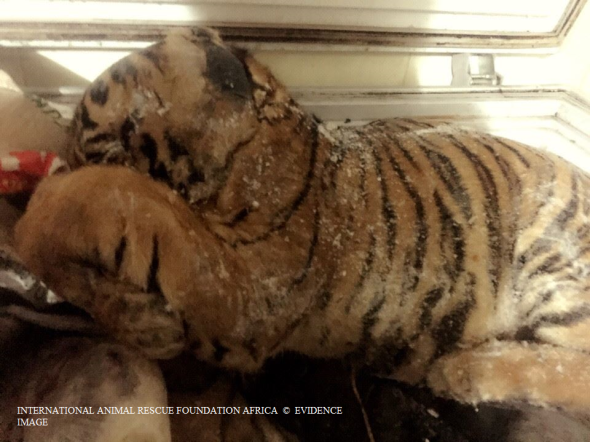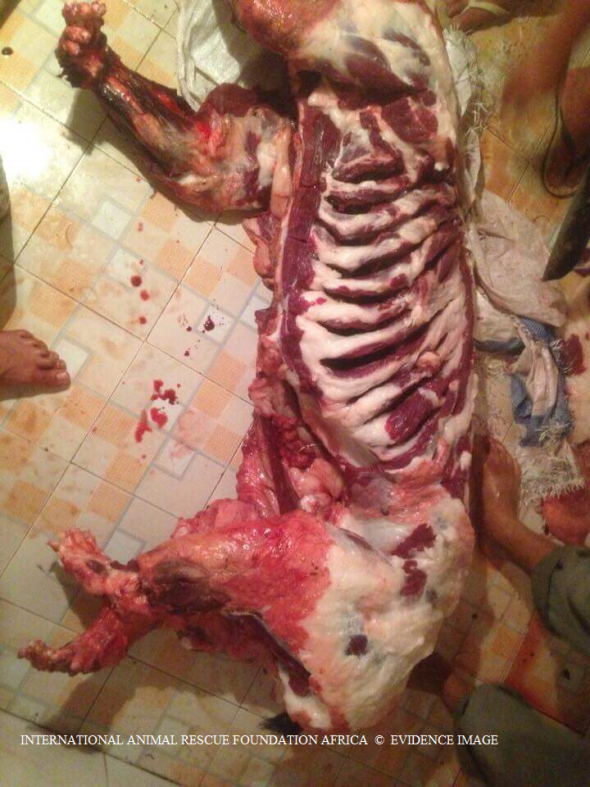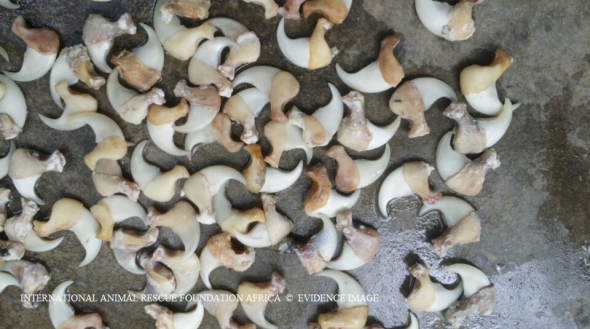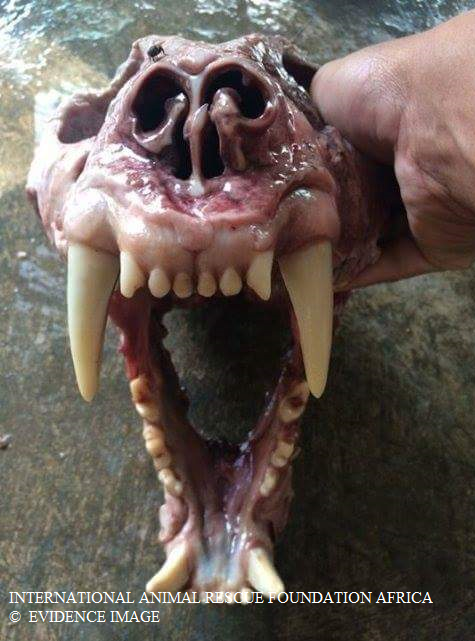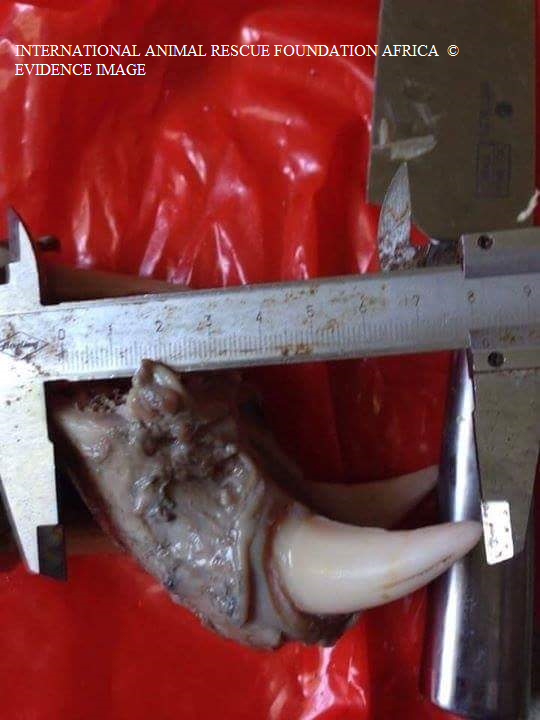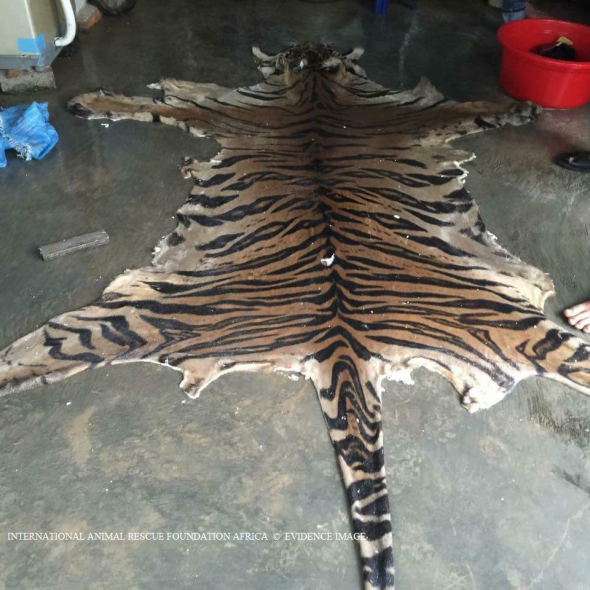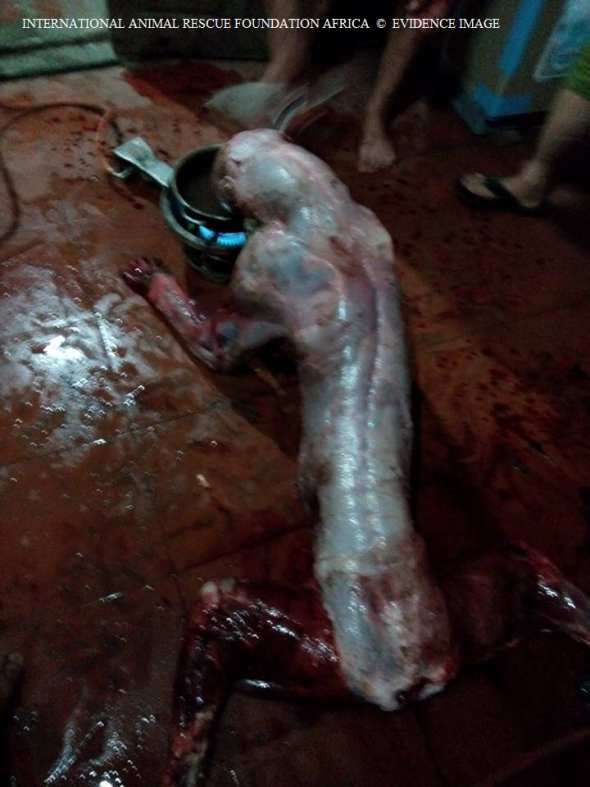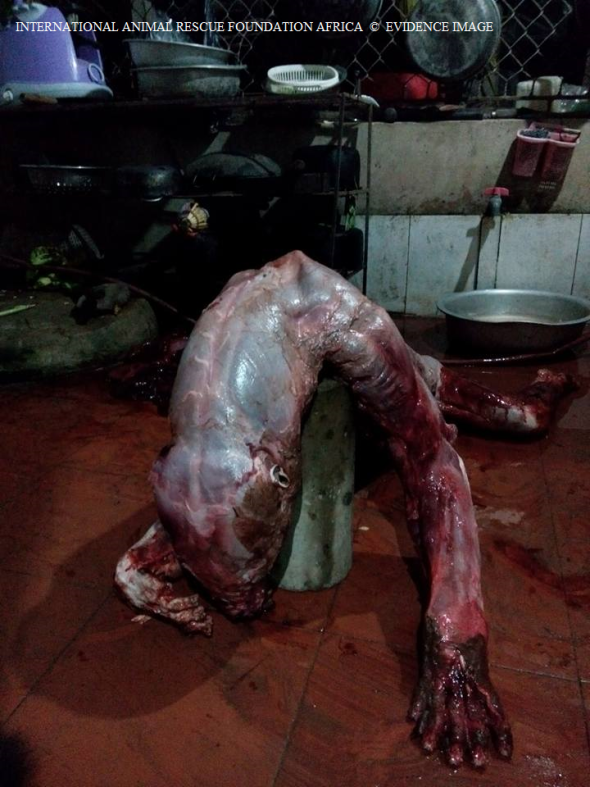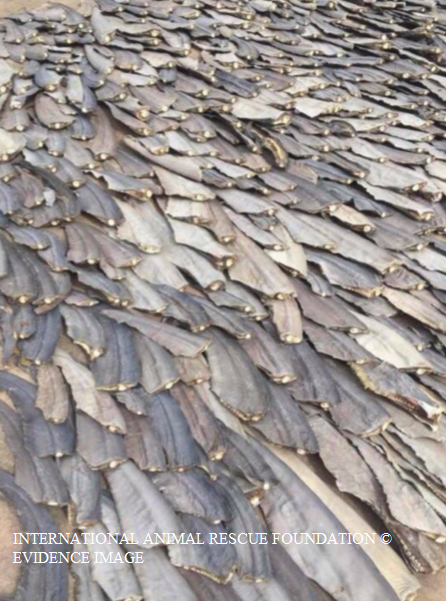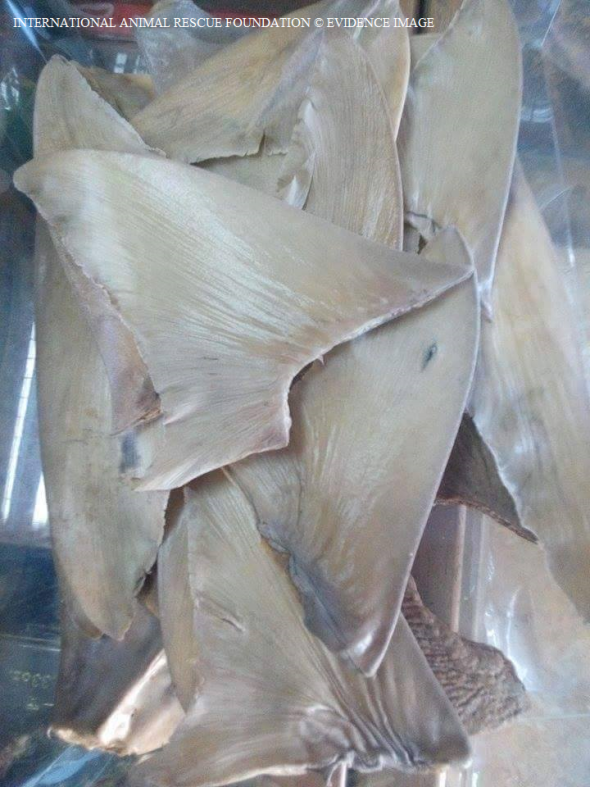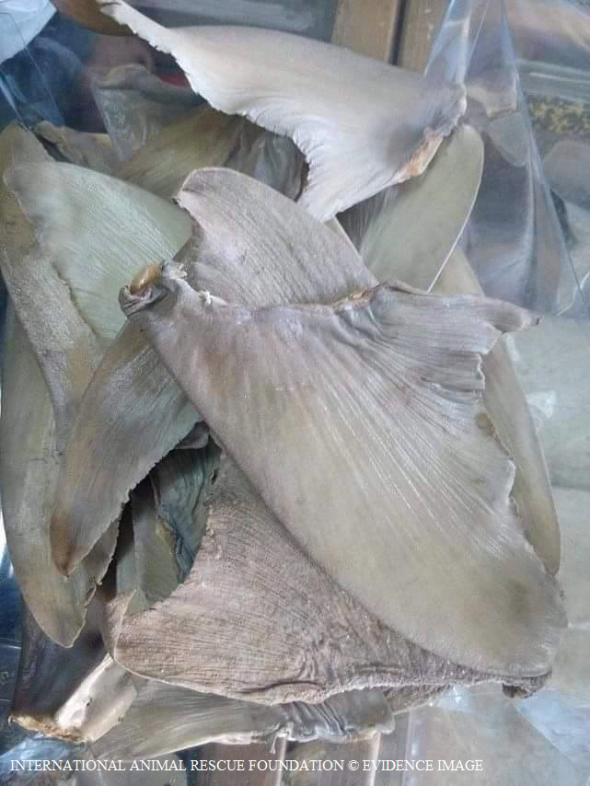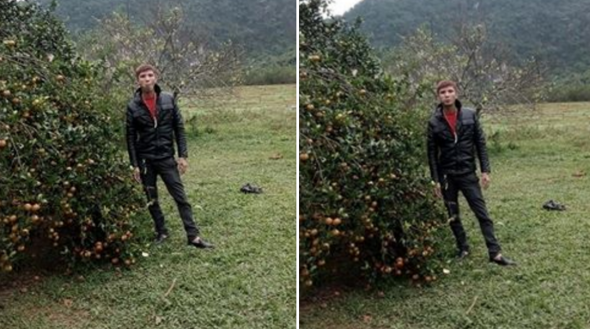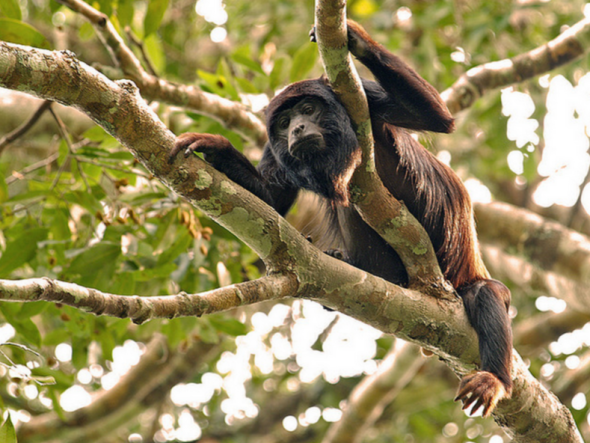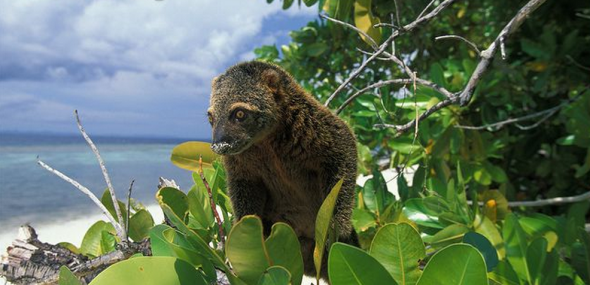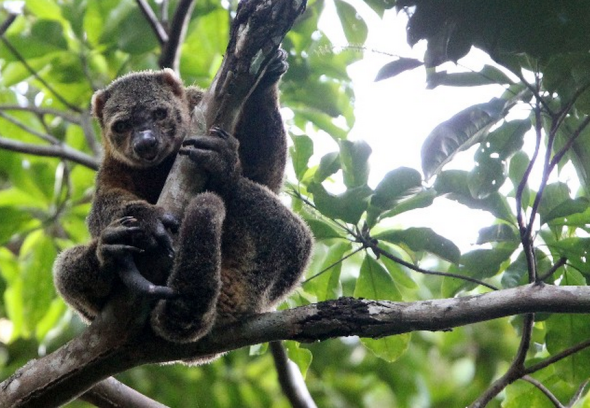ENDANGERED SPECIES MONDAY | SPOTTED SEAHORSE FACING EXTINCTION.
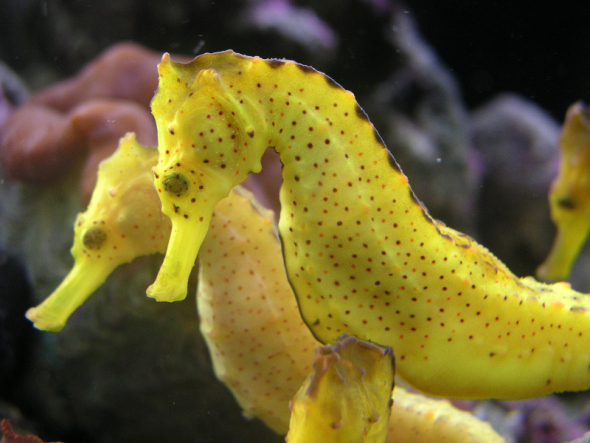
ENDANGERED SPECIES MONDAY | HIPPOCAMPUS KUDA
Once a common site within our oceans, the spotted seahorse (common seahorse) is facing extinction. The largest threat known is use and trade within the Traditional Chinese Medicine culture. As of 2015 its estimated that some twenty million (20 million) seahorses are used within the Traditional Chinese Medicine trade. (Photographer unknown).
Known in Mandarin as Hai Ma seahorses are believed to cure a wide spectrum of ailments and diseases and generally help to improve health. There is no evidence that I can locate to prove seahorses can improve human health in anyway shape or form. T.C.M practitioners have alleged seahorses can cure anything from asthma, arteriosclerosis, incontinence, impotence, insomnia, thyroid disorders, skin ailments, broken bones, heart disease, throat infections, abdominal pain, sores, skin infections.
Broken bones? Now that is about as ridiculous as it gets, impotence and broken bones are not illnesses but more physical complaints of which consuming seahorses is about as effective as pouring boiling hot water onto a third degree burn. A study in Taiwan located some fifty eight (58) sea horses from Taiwanese T.C.M vendors. A total of eight (8) different species were located. Seven (7) were listed as vulnerable, while one (1) was listed as endangered.
Source: http://www.jfda-online.com/article/S1021-9498(13)00043-4/abstract
The species listed as endangered was Hippocampus capensis commonly known as the Knysna seahorse (pictured below). The remaining seven (which doesn’t include the species pictured above) are scientifically identified as Hippocampus algiricus, Hippocampus comes, Hippocampus histrix, Hippocampus kelloggi, Hippocampus kuda, Hippocampus spinosissimus, and Hippocampus trimaculatus. If we include the species above - Hippocampus kuda this makes a total of eight (8) listed as vulnerable, and one (1) listed as endangered equating to nine (9) in total nearing extinction.
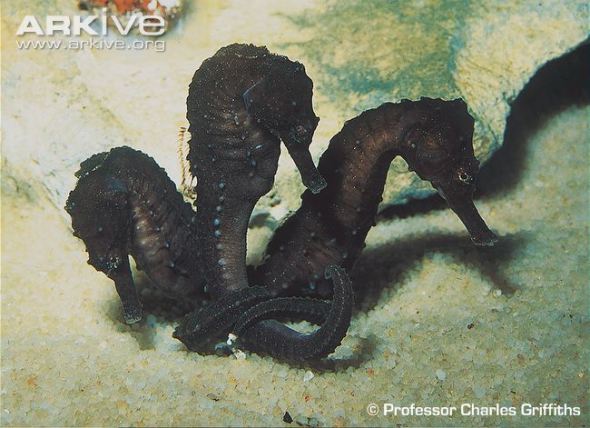
Image: Knysna seahorses | Credits Professor Charles Griffiths
Its quite possible there could be many more species of sea horses that haven’t been listed on the International Union for the Conservation Of Natures Red List [IUCN]. Hippocampus kuda was identified back by Dr Pieter Bleeker (July 10, 1819, Zaandam – January 24, 1878, from The Hague) whom was a Dutch medical doctor, ichthyologist, and herpetologist.
He was famous for the Atlas Ichthyologique des Orientales Neerlandaises, his monumental work on the fishes of East Asia published between 1862 and 1877. I don’t state this often however am going to repeat oneself again. Every single species of animal I’ve written about identified from the (1800’s) has almost all but gone extinct or are at least on their way towards extinction. Another pattern I have found is that many animals and plants used within the (T.C.M) trade were being used thousands of years ago - long before non-Asian travelers identified them. When the species are eventually identified - individual specie populations begin declining!
Since 1996-2003 the common seahorse has been listed as vulnerable, populations are declining very fast, furthermore there was little mentioned about the species at CoP17 in Johannesburg, South Africa; a country that is responsible for a large proportion of seahorse harvests. These harvests are legally shipped from South Africa into Asia, yet large numbers of seahorses are decreasing in South Africa.
I.A.R.F.A Environmental Crime Investigators located one legal trader identified as NGWABE TRADING that hosts a supplying ability of TWO HUNDRED METRIC TONS a month. When we inquired where these seahorses are harvested from, and the species caught we were not given a straightforward answer. NGWABE TRADING was though able to supply us with seahorses that have paperwork (all allegedly legal and above-board.) Yet we’re losing the vast majority of our seahorses. Furthermore I am very suspicious as to whether all of these seahorses are being harvested legally.
Two hundred metric tons per month is no different to two hundred metric tons of sand, cement, or rocks. On questioning the fishing company which I myself do suspect illegal poaching is going on here, many of these seahorses are dry traded to Asia. We’re talking big bucks too. So if this trade was restricted, or even banned, its likely South Africa would lose her seahorses in a matter of years, because legal farming operations wouldn’t be allowed if trade bans came into place. Meaning poaching would increase on a wide scale to supply Asia’s appetite for pseudo medicines.
Source: http://southafrica.tradekey.com/dried-sea-horses.htm
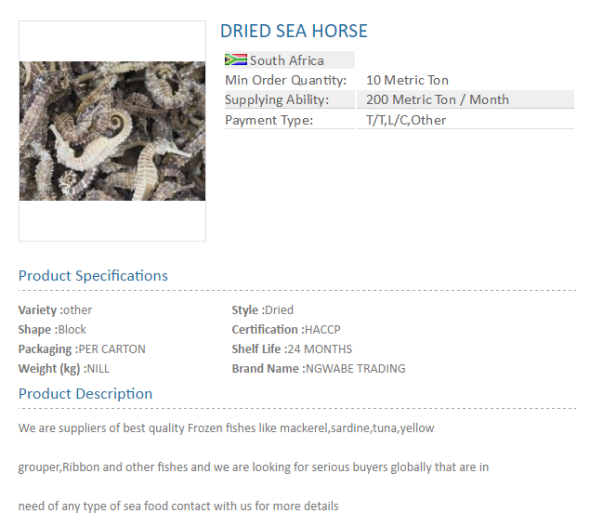
Image: One of many legal online seahorse/fish traders trading to Asia.
Seahorses are also used as an aphrodisiac and to facilitate childbirth in the T.C.M trade. As much as I want to disbelieve this, there is unfortunately “some scientific evidence” that does prove to a degree consuming a regular fish diet can improve sexual behavior within humans; however helping to conceive I am somewhat skeptical about. Sources are cited below for your information from the scientific community.
Source 1: http://www.pbs.org/wgbh/nova/seahorse/vincent.html
Source 2: http://www.acupuncturetoday.com/herbcentral/sea_horse.php
Between twenty (20) and forty (40) million seahorses are allegedly harvested every-year for the T.C.M trade, however if we go on the amount of trade originating from South Africa - its obvious that by the ton load this number is seriously under-quoted. If I myself was purchasing the minimum ton load of ten (10) tons per month - that would easily equate to over twenty (20) and forty (40) million seahorses per annum based on twelve (12) months.
So I think its safe to say we’re looking at possibly hundreds of millions rather than the claimed IUCN stats. I must also note that the spotted seahorse is listed on Appendix II, and to date we will never really know how many seahorses remain within their endemic range, or how many are illegally harvested?
The common seahorse in question which is the species harvested the most for the T.C.M trade is endemic to the following regions: American Samoa (American Samoa); Australia (Northern Territory, Queensland); Bahrain; Cambodia; Fiji; French Polynesia; Hong Kong; India; Indonesia; Japan; Kuwait; Malaysia; Micronesia, Federated States of ; Mozambique; New Caledonia; Pakistan; Papua New Guinea; Philippines; Saudi Arabia; Singapore; Solomon Islands; South Africa (KwaZulu-Natal); Taiwan, Province of China; Tanzania, United Republic of; Thailand; Tonga; United States (Hawaiian Is.); and Viet Nam.
Endemic ocean locations are: Indian Ocean – western; Indian Ocean – eastern; Pacific – western central; Pacific – northwest; Pacific – eastern central.
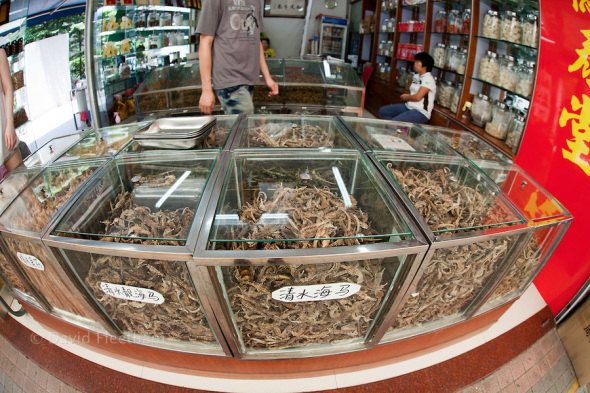
Image: Dried Seahorses for sale, China | Credits David Fleetham
THREATS
Common threats are cited above in more detail. Major threats though are listed below for your immediate attention:
Hippocampus kuda is threatened by damage to its habitats from coastal development and destructive fishing practices. Land-based activities such as coastal construction can diminish seagrass beds and mangroves while leading to increased pollution and siltation in surrounding marine waters. For example, in Malaysia Hippocampus kuda numbers declined due to an extensive port development around the Pulai Estuary that destroyed large tracts of seagrass meadow.
Fishing methods such as trawling result in substantial damage to seagrass beds globally, and especially in the Indo-Pacific. The decline in and fragmentation of the species’ habitats throughout its range indicates possible declines in populations in addition to those caused by fisheries.
All seahorse species have vital parental care, and many species studied to date have high site fidelity, highly structured social behaviour, and relatively sparse distributions. These life history parameters often make species susceptible to exploitation as has been demonstrated for a number of species, including seahorses. Although seahorses also have some traits, such as small body size, fast growth and high fecundity, that may confer resilience to exploitation pressures.
Due to the mode of spawning exhibited by Hippocampus kuda (ovoviviparous brood pouch male parental care), fecundity is comparatively low compared to non-brood pouch spawning fishes and therefore its capacity for population growth is more limited than other species. As a result of the lack of broadcast spawning of pelagic eggs, dispersal of potential recruits is limited. Additionally, given the limited swimming abilities of seahorses, it is highly unlikely that rescue effects would occur from adjacent populations.
Concluding: I am somewhat concerned about the species future survival. CITES is allowing use and trade however those countries that are listed under the convention are allegedly strictly regulated and monitored - I don’t call ten tons per month from one South African company strict regulation. Countries that are importing/exporting must prove they have permits, however I don’t quite understand how this area of monitoring is working - which it clearly isn’t as the seahorse trade is colossal within many Asian countries and South Africa too.
Hippocampus kuda is listed as vulnerable in the National Red Data Books of Singapore and Thailand, and endangered in the Red Data Book of Viet Nam. In France it is illegal to import seahorses under the name H. kuda.
The future is bleak unfortunately and with trade so fanned out, and from what I have seen on my visits to Asia (increasing) I do honestly believe we’re going to be reporting extinctions in the ‘very near future.’ To date there are thirty two (32) identified species of seahorses. Ecologically, they are important in food chains, consuming tiny fish, small shrimp, and plankton, and being consumed by larger fish (such as tuna and rays) and crabs. So if we lose the seahorse we lose yet another vital source of food for endangered tuna species, rays, crabs, and even whales (Etc.)
Source: http://www.newworldencyclopedia.org/entry/Seahorse
Thank you for reading and please share to create awareness and to improve education.
Dr Jose C. Depre.
Environmental, Botanical & Human Scientist.
www.speakupforthevoiceless.org
WHY ARE WE STILL HUNTING RHINOS FOR | WHEN NO AMOUNT OF FUNDING HAS REDUCED POACHING?
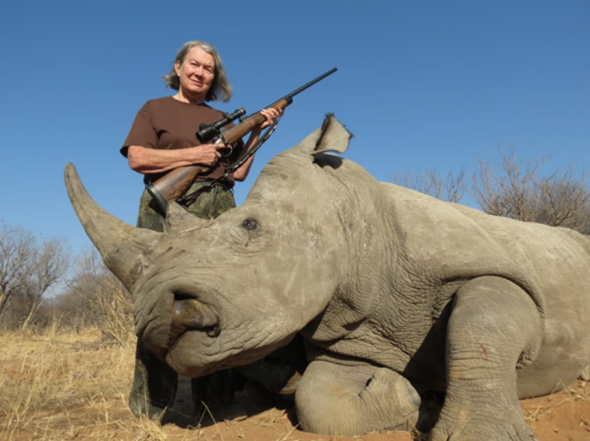
WHY ARE WE STILL HUNTING RHINO?
Why are foreign and native Africans still trophy hunting Rhinoceros for, when no amount of funding generated from these hunts has actively decreased poaching? Image credit: (Mrs Janice Hull, Limcroma South Africa).
Over five years ago I and a group of dangerous game hunters (DGH’s) were involved within a heated debate relating to the money allegedly generated from rhino hunting. The question I asked (and continue to ask) was: “Why are we still hunting rhino for when the money generated from these hunts doesn’t appear to be having any affect whatsoever on decreasing rhino poaching or increasing conservation efforts and security for African rhinos”? (Image above: Hunter - American Janice Hull).
The answer[s] I received were mixed opinions, abuse, and lies. I aimed this question at a number of professional hunters - (PH’s) working in South Africa, and Namibia most of which were American. While the vast majority of dangerous game hunters stated money raised from hunts was directed back into rhino conservation, I’m still after five years questioning where this money is actually going because rhino poaching is not decreasing whatsoever?
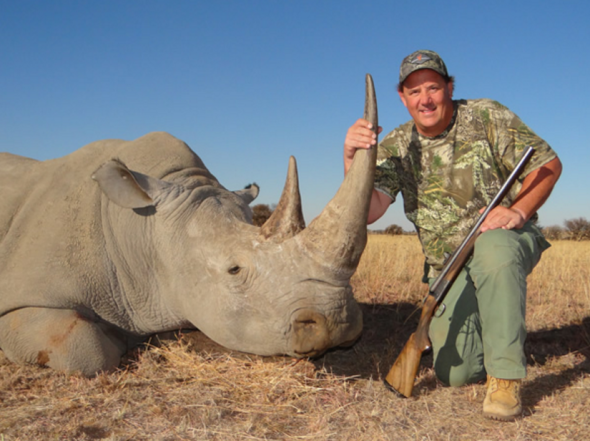
Image Credit: Trophy hunter Mr Loddie Naymola
Since 2008 poachers have slaughtered a staggering 5,940 Rhinoceros - most of which have been poached within South Africa’s flagship park identified as the Kruger National Park. From the year of 2007 rhino poaching figures began increasing rapidly. A total of 13 rhino were bludgeoned to death in 2007. Meanwhile in 2009 South Africa lost a further 122 rhinos (due to poaching).
However come 2011 we really began to see poaching figures rise, come the end of December 2011 a whopping 448 rhinos had been slaughtered by poachers to fuel the Asian demand for pseudo rhino horn medicine. Come 2013 figures shot through the roof resulting in some 1,003 rhinos poached stated the Department of Environmental Affairs come 2013 December end. Then the largest stats were reported back in 2014 of which South Africa lost some 1,215 Rhinoceros to poachers. Yet ‘hunting revenue is preserving our ionic species’?.
Unfortunately at some point from 2014-2016 the Department of Environmental Affairs Minster Honorable Edna Molewa placed a complete ban on the public reporting of any rhino poaching figures, there was no reason as to why this ban was implemented, of which to date still remains in place. Coincidentally (2015’s poaching statistics) had decreased somewhat - of which come December 2015 some 1,175 rhinos had ‘allegedly been poached’. Isn’t that coincidental, a blanket ban on poaching figures is ordered, then come the next year a decrease is seen!.
The SOUTH AFRICAN DEFENCE WEB stated back in January 2016 that a ‘lack of rhino poaching information was negatively affecting anti poaching’. However despite the governmental blackout on rhino poaching incidents numerous organisations such as ‘Stop Rhino Poaching and ‘Outraged South African Citizens against Poaching’ had reported via media, press and anti poaching reports a small rhino poaching decline.
However both of these organisations didn’t obtain their reports from the government, or did they?. So last years poaching stats could indeed be higher than what has been stated in the public domain. Furthermore both Facebook/Online groups/NGO’s share there statistics openly. So in all honesty there is no evidence whatsoever to prove a poaching decline from 2015 has occurred. Moreover and as explained - I myself find it awfully suspicious that since the 2015 poaching report blackout by the South African government - poaching stats just coincidentally decrease like that?.
Elise Daffue whom ‘allegedly runs some form of rhino intelligence group’ (on Facebook - identified as Stop Rhino Poaching), and not in the actual field, stated: “The drop in kills is testimony to the huge effort being made on the enforcement side. Environment Asset Protection strategies have been formulated and implemented over the past three years, guiding the strategic and operational plans nationally – from the ranger in the bush who detects the spoor to the prosecutor who fights that bail is denied. Keeping the numbers down depends entirely on good field work and reserve security, good investigations and good convictions”
While Elise Daffue has stated there was a drop in rhino poaching due to a “huge effort being made on the enforcement side” there remains no evidence whatsoever proving there has been a decline in rhino poaching from 2014-2015. Moreover if there is evidence where has this data come from?. Furthermore whenever we see hunters and ‘animal lovers mingling together’, regardless of what you state your organisation is and does - alarm bells begin ringing, especially coming close to the next CoP summit.
The Founder of Stop Rhino Poaching is friends with a hunter identified as Gustav Collins who runs the Mattaniah Game Reserve Furthermore Elise Daffue is also associated with the individual known as Simon James Naylor who is the Conservation Manager for Phinda Private Game Reserve of which has connections to various hunting organisations and the (WWF) that supports sustainable hunting of Rhinoceros within South Africa and Namibia. Finally (among many others) we have Mr Mark Lautenbach who works as a Specialist Freelance Guide at Ukuthula Lodge. Elise Daffue founder of Stop Rhino Poaching is also friends with a Department of Environmental Affairs worker, and numerous other governmental bodies, police and hunters.
While the above details may not seem overly important, when we’re trying to locate data on hunting statistics, money generated from these activities and more, suspicions are raised when we locate so called professional organisations that are connected to numerous hunting organisations; and institutions such as ‘petting farms’ I.e Ukutala Lodge that has connections with the canned hunting industry and, has featured in a (Blood Lion documentary).
So as one can see it all becomes rather confusing when all we want is upfront and honest answers, however when we ask questions and later find out there are numerous connections to the hunting and possibly ‘pseudo hunting trade’ will we even obtain a serious, straightforward and honest answer? When we’re lied to by hunters, how can we possibly trust Non-Governmental Organisations that are aligned to the very people whom are lying, and are hunting our rhinos while pretending to be so called conservationists? Moreover we (the organisation) do not believe there has been any decline whatsoever relating to rhino poaching. We do though believe that this so called ‘decline may be playing a role in this months CoP17 Summit’ relating to rhino horn legislation.

Image Credit: European trophy hunter, Mr Dennis Schemmel
Back in July 2016 it was reported that Rhinoceros poaching was finally without a doubt at ‘tipping point’. South Africa has seen the largest poaching rates recorded at some 72% from 2011-2015. Namibia recorded a loss of 10.8% from 2012-2015. Zimbabwe recorded a loss of 3.1% from 2012-2015. Kenya has recorded a loss of 4.4% from 2012-2015. Finally ‘other African range states mainly in Central Africa’ recorded a loss of 2.5% from 2012-2015.
While its been reported that some 25,000 Rhinoceros remain on the African continent - a depressing near six thousand have been poached all over the continent from 2012-2015. Yet hunting revenue from one of Africa’s most expensive game animals is allegedly reducing poaching? How is this possible, when we’ve lost so many rhinos, and reports from the Global Initiative have confirmed ‘rhinos are at tipping point’.? Furthermore how can the hunting community continue to state that revenue from rhino hunting is helping to secure the rhinos future when 1. It clearly isn’t due to poaching statistics increasing, and 2. The majority of hunters today are now supporting an international rhino horn trade ban lift?
The Global Initiative stated: “Dozens more rhino have been shot in so-called “pseudo-hunts”. Across Europe, castles and museums have been raided by criminal gangs in search of rhino horn trophies. And in the United States, businessmen, antique dealers – even a former rodeo star and a university professor – have been implicated in the illicit trade”. Driven by seemingly insatiable demand in Southeast Asia and China, rhino horn has become a black market commodity rivalling gold and platinum in value.
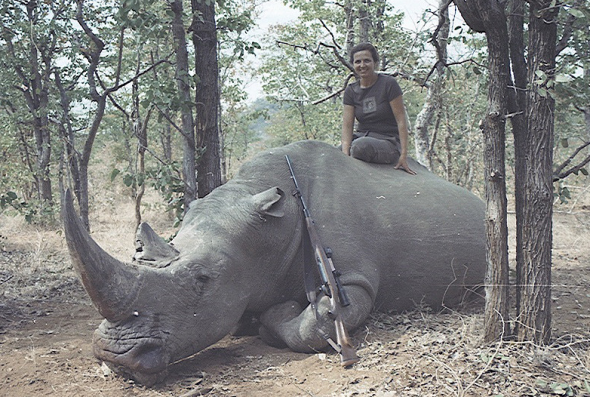
Image: Female rhino hunter, origin of hunter unknown and name. South Africa?
To date there has been very little forthcoming information in relation to revenue generated from African rhino hunts, and where exactly this hunting money is going. Furthermore with rhino poaching still increasing, and tipping points now recorded by ‘various trusted organisations’ the question must now be raised why are we still hunting Rhinoceros?
From the 1940’s tiger hunting was common among many international and local tourists in India. However so too was tiger poaching. It was alleged that revenue from tiger hunting was actually helping to preserve the tiger species and other mammals too. Unfortunately this turned out to be complete codswallop. Then in 1973, the Indian government finally under the orders of Prime Minister Indira Gandhi banned tiger hunting due to so many tigers being poached - and legally hunted at the same time. Had Prime Minister Indira Gandhi not instigated ‘Project Tiger’, the tiger would have gone extinct way back in the 1970’s.
In the last 50 years the tiger population in Asia has plummeted from 100,000 to about 5,000. The number of tigers is dangerously low, and the conservation of the world’s remaining tigers is of global concern. Now, in this volume, 40 world authorities on tigers from Asia, Europe, and North America have summarized and identified the management, conservation, and research needs for this endangered species. Before Project Tiger was implemented tiger populations were being hammered. The same identical hunting and poaching behavior before Project Tiger can now be witnessed in Africa - primarily in South Africa where rhinos are also being hammered both by hunters, poachers and pseudo hunters. Does that ring alarm bells among the many FAKE NGO’S out there?
International Animal Rescue Foundation Africa undertook various searches relating to rhino hunting and revenue generated from these hunts within South Africa. What we found was from 2005-2015 a total of 330 ‘White Rhinoceros’ had been legally hunted from 2005-2015. The minimum hunting price was exactly $50,000(USD). While the maximum hunting price was exactly $150,000(USD). It was found that from 2005-2015 and based on the assumption these were (white rhino hunts only) and, taking into consideration the minimum price first. Revenue generated from rhino hunting at the price of $50,000(USD) resulted in an estimated total $181,500,000 million - that’s $181 million(USD) raised from hunting. Meanwhile, and taking into consideration the highest price (being $150,000(USD) a total of $554,500,000 million was generated.
While we cannot place these two equations together and provide a factual sum because we don’t know how many rhinos were legally hunted at each individual price, the sheer fact that millions of dollars has been generated from 2005-2015 should be enough to explain that something isn’t quite right here. Furthermore these figures are based on the assumption these were white rhino hunts,
MINIMUM HUNTING PRICE: 2005-2015 = $181,500,000 million(USD)
MAXIMUM HUNTING PRICE: 2005-2015 = $554,500,000 million(USD)
SOURCE: REPORT TROPHY HUNTING.
To date (and as you can see within the sourced links above) there still hasn’t been a single reliable report that confirms just how much money is being made from trophy hunting in South Africa. The only so called reliable report (which is about as reliable as a chocolate teapot) and, being the only report to surface thus far stated that $200 million(USD) was generated from the years of 2010-2011 (in regards to all South African trophy hunts)? Who number crunched these figures, who even dared to come up with such an absurd low revenue income? I would also like to remind hunting organisations, just because you don’t have to tell us what you’re making, we can contact other organisations/institutions, locate prices, we can phone and email. Eventually we’ll find the truth!
Now either our expert eyes and our mathematical friends are missing something here, or journalists media and the pro trade lobby are forgetting that despite hunting revenue being made pubic. Environmental Scientists can research CITES trophy hunting statistics, then locate the common maximum and minimum price, and the number of rhino trophy heads exported/imported. So as one can read above just from the years of (2005-2015 - millions was made just from Rhinoceros hunting). Moreover who ever came up with the 2010-2011 sum of $200 million USD clearly is missing a lot of money off here, and needs to undertake a mathematical course too?
Rhinoceros hunting is by far the biggest money maker within the hunting business (most of this money is made in South Africa which hosts the largest rhino populations on the planet). Furthermore it just seems too coincidental that from 2010-2011 literally every hunting organisation that’s promoting/advertising rhino hunts has mysteriously removed their prices.
Trophy hunting of rhino is strictly regulated. Every year a total of five (black rhino) can legally be hunted within each of Namibia and South Africa, which totals to a maximum of (ten) per year - five per country. Furthermore in South Africa and Namibia one white rhino can be hunted by one hunter per year - that’s one rhino per hunter every year. Unfortunately there remains no further hunting revenue and data from the years of 2014. Its been estimated by the National Geographic based on the United States Fish and Wildlife report that the United States imported a total of 328 white rhino trophies from South Africa from the years of 2005-2014. Meanwhile a total of 7 white rhino were hunted and subsequently imported to the United States from Namibia from the years of 2005-2014.
SOURCE: NAT GEO HUNTING DATA.
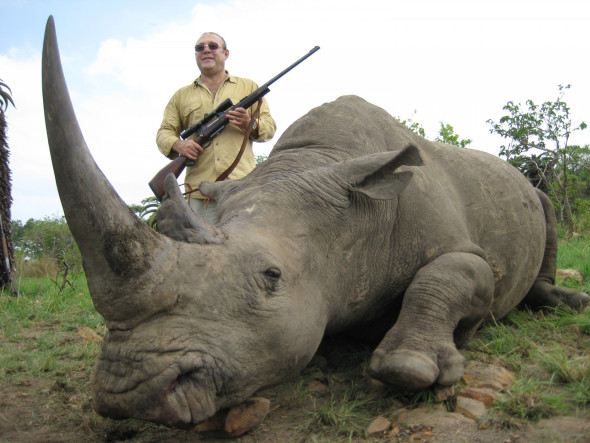
Image Credit: Rhino hunter Alexander Tseytlin
Black rhino hunts have provoked much controversy over the past five years mainly because black rhinos are actually listed as (critically endangered), hence why only five black rhinos can be hunted per year in South Africa and Namibia. Since 1996-2011 the species has been listed as near extinct on the International Union for the Conservation of Natures Red List. Fortunately due to ‘private farming conservation efforts (not wild efforts) the species has allegedly and gradually increased (primarily due to hunting?)’. Both private and wild populations are believed to be increasing within South Africa and Namibia placing the total species population count from 2010 at 4,880 black rhinos.
The only reports that we ourselves can offer in regards to black rhino trophy is that of media and press reports that have documented on large scale bidding for black rhino hunts. In January 2014, Corey Knowlton bid $350,000 for a permit to hunt and kill a black rhino in Namibia (Source: Corey Knowlton). Back in June 2016 Namibia offered up three of its black rhinos to trophy hunters. While the price has not been documented its most likely be in the region of just over $1 million(USD) for the three Black Rhinoceros (Source: Namibia black rhino hunt).
Meanwhile back in 1996 a game rancher named John Hume paid about $200,000 for three pairs of endangered black rhinos from the wildlife department of the South African province of KwaZulu-Natal. Among them was a male who would come to be called “Number 65,” and whose death would play a central role in the debate about conservation.
When the black rhino bull arrived, Hume’s farm manager — a burly Zimbabwean named Geoff York whose typical mode of dress is army boots and a pair of purple shorts — tranquilized him, clipped two notches in his left ear and two in the right, and gave him a number: 65. Mr John Hume later picked Mr Peter Thormahlen to organize the killing of ‘number 65’. The price was set at a $25,000 deposit on a $150,000 fee for a seven-day hunt.
Most of that would go to John Hume - the very man that is today advocating for an international legalized trade in rhino horn and has connections to a wide number of organisations such as, WWF, IUCN, CITES, The Department of Environmental Affairs and numerous other figures. Then on July 23rd 2005 Thormahlen and his client with John Hume tagging along proceeded on foot. Suddenly the rhino noticed them and rose from the dirt. The client pulled the trigger, and the first bullet pierced Number 65’s skull. The rhino, still standing, turned. A second bullet hit, and the rhino dropped dead. (Source: John Hume Rhino Hunt).
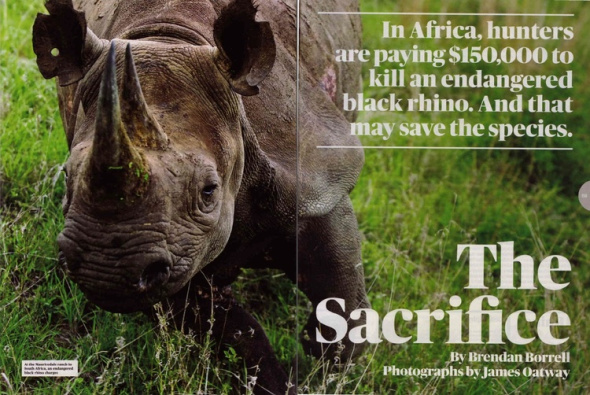
Source: The Sacrifice, please click the source tag for more info
As you can read there is a staggering amount of money parting hands to hunt both black and white rhino. Yet poaching is still skyrocketing? South Africa has lost from 2008 almost 6,000 rhinos to poachers. Back in 2014 Namibia lost a total of 24 rhinos to poaching, then come 2015 a whopping 60 rhinos were poached. (Source: Poaching stats Namibia).
So the question still remains just what exactly is all this money going towards, can each professional hunting organisation prove to me, my organisation and the public that the money generated from rhino hunting is indeed being used to fund anti poaching operations, security, conservation, education, awareness and horn poisoning? (Etc).
While I’ve been extremely silent on this issue too since 2011 I’m going to make it pubic now. I dislike the fact that a ‘prominent South African game hunter’ is involved with the Rhino Orphanage. Back in 2011 we (the organisation) were going to submit funding for scales and equipment, however when running a trace on whom ran the main website, down to a trace on that individuals Facebook page, and more we later discovered a ‘silent partner’ that is hunting many of the big five..
..So who do we trust when it comes to facts and figures? How can we trust anyone that is stating hunting is indeed increasing rhino numbers when literally every individual and organisation are in someway aligned to one another in South Africa and over the borders? Can the Rhino Orphanage and its ‘affiliate’s’ also prove that every single rhino that’s been saved has been released back into a reserve, and not hunted for sport that clearly from this entire document has proved - no amount of hunting whatsoever is increasing rhino populations!
Hunting operations are indeed expensive. While the price of a hunt may indeed seem high. One also has to take into consideration what the farmer and/or professional hunter has to pay for too. Upkeep of land, maintenance of vehicles and buildings, fuel, service charges for gas, electricity, water, and rent Etc, food and beverages for the visiting hunters, guest house uses, damages to guest houses, travel, firearms (among many other bills). Then of course comes anti poaching being the last bill. Some of this expense can be viewed below.
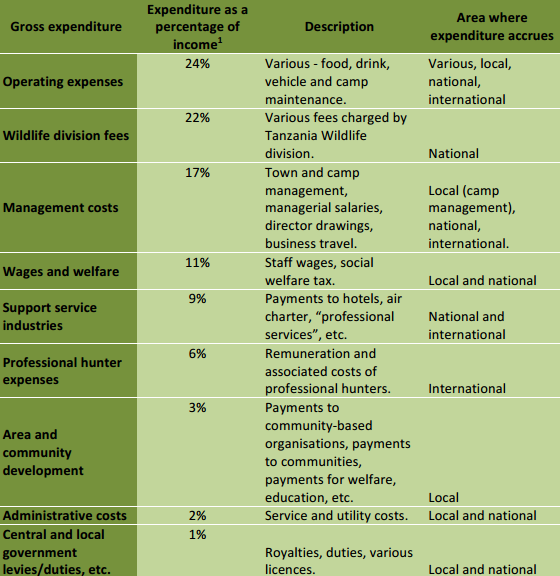
Image: Hunting Charges (Source: IFAW)
While we know that Rhinoceros trophy hunting is indeed expensive, poaching is unfortunately still increasing in various African countries, please do check the sourced links out above, and read that data carefully. The image above with source proves that no big five farmer is taking every single dollar or euro that’s advertises rhino hunting on their site or allows rhino hunting on their property.
So the question remains why are we still hunting rhino for? The question I’ve answered. Rhino hunting is nothing more than a overpaid sport that does nothing whatsoever for conservation and, is not under any circumstances whatsoever contributing to decreasing poaching. All these millions if not billions being made yet here we are still seeing rhinos poached. Finally, and the very best question of them all. If hunting revenue from rhino hunts is not decreasing poaching, how the hell is a so called sustainable rhino horn trade going to decrease poaching? Same money - same prices - going nowhere!
Thank you for reading.
Dr Jose C. Depre PhD. MEnvSc. BSc(Hons) Botany, PhD(NeuroSci) D.V.M.
Master of Environmental, Botanical & Human Science.
Environmental, Botanical and Human Scientist.
Endangered Species Monday | Heteroglaux blewitti - Extinction is now Imminent.
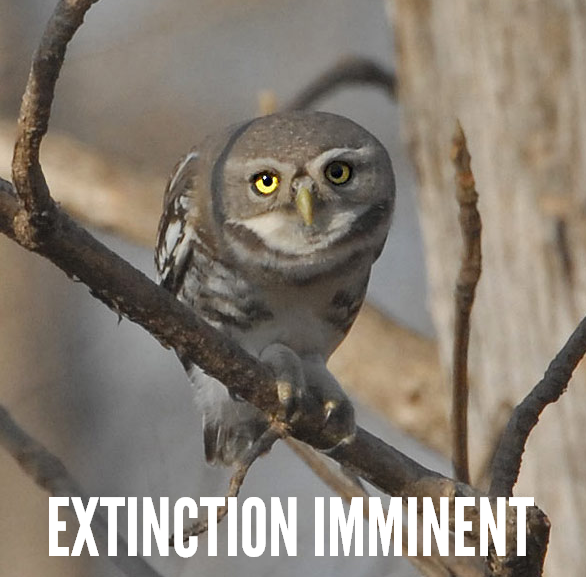
Endangered Species Monday | Heteroglaux blewitti - Extinction is now Imminent
This Mondays (ESP) article (Endangered Species Article), I am am documenting yet again on a species of forest owl (being the third time). This time I know for sure the species is going to go extinct - and sadly there is little that can be done to preserve the bird, although environmentalists are still battling, unfortunately it’s not looking good at all. (Image Credit: Birds of the Bible for Kids).
Listed as (critically endangered), the species was identified back in 1873 by Dr Allan Octavian Hume CB (6 June 1829 – 31 July 1912) was a civil servant, political reformer, ornithologist and botanist who worked in British India. He was one of the founders of the Indian National Congress, a political party that was later to lead in the Indian independence movement. A notable ornithologist, Dr Hume has been called “the Father of Indian Ornithology” and, by those who found him dogmatic, “the Pope of Indian ornithology.”
As an administrator of Etawah, he saw the Indian Rebellion of 1857 as a result of misgovernance and made great efforts to improve the lives of the common people. The district of Etawah was among the first to be returned to normalcy and over the next few years Dr Hume’s reforms led to the district being considered a model of development. Dr Hume rose in the ranks of the Indian Civil Service but like his father Joseph Hume, the radical MP, he was bold and outspoken in questioning British policies in India.
He rose in 1871 to the position of secretary to the Department of Revenue, Agriculture, and Commerce under Lord Mayo. His criticism of Lord Lytton however led to his removal from the Secretariat in 1879. Back in 1988 the Forest Spotted Owlet was listed by environmentalists as threatened. Unfortunately since the 1980’s habitat destruction, poaching, deforestation and gradual human population increases have skyrocketed.
“CONTRADICTIONS”
Conservationists allegedly from 1994-2012 battled hard to preserve the species of Spotted Owlet, regrettably their battles have been lost. Back in 2013 a further census was undertaken of which proved the species was nearing complete extinction within the wild. Today (2016) its incredibly likely we’ll lose the Spotted Owlet from all of its range.
Endemic only to India there is estimated to be (from the last census of 2013) a depressing total of 50-260 mature individuals remaining. The total number of “sub-populations has been identified as 2-100. Furthermore within the past ten years from 2006-2016 there has a been “ALLEGEDLY” a continuous population decrease of exactly 10%-19%. International Animal Rescue Foundation India has also reported within the past four years that “very small populations known are still decreasing”, and from records kept the species is highly likely to be extinct within the next 730 days, which is exactly two years.
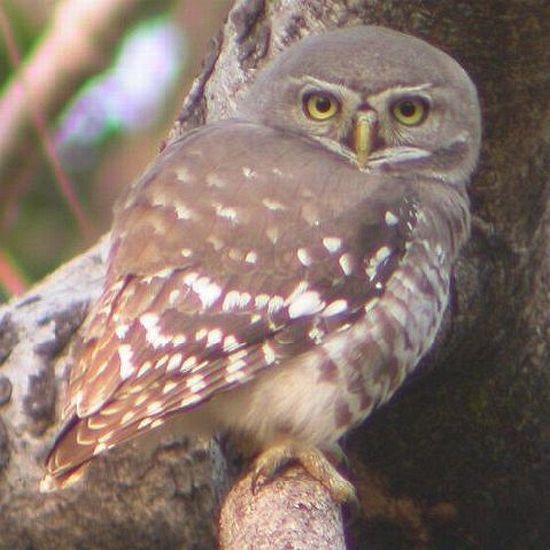
Image credit: Ashley Banwell / World Birders
The International Union for the Conservation of Nature RED LIST have ‘deliberately lied’ and ‘misinformed the general public’ stating the the bird listed hereto was extant from the years of 1988-1996. Conservationists from International Animal Rescue Foundation India in New Delhi hasn’t no reports from 1988-1996 because the bird was only re-discovered in 1997 after it was described in 1873, and it was not seen after 1884 and considered extinct until it was rediscovered 113 years later in 1997 by Pamela Rasmussen. Source: Ripley, S. D. (1976). “Reconsideration of Athene blewitti (Hume).”. J. Bombay Nat. Hist. Soc. 73: 1–4.
So whatever the IUCN are talking about is either codswallop or deliberate misinformation to garner further donations from the public?. I mean how on earth can one make this absurd lie up? Maybe the IUCN can produce documented evidence that proves the species has been active from the 1980’s to 1997? I highly doubt that they can, furthermore this lie (among many more) also brings into question any other lies the organisation “may have been publishing within the public domain” to misinform the general public?
Moving on - the population is estimated (as explained) to number 50-249 mature individuals based on the number of records from known sites, with c. 100 individuals now recorded from Melghat Tiger Reserve. This estimate is equivalent to 75-374 individuals in total, rounded here to 70-400 individuals. Given the increasing number of records and sites known within its range it may prove to be more common than previous evidence has suggested.
Trend Justification: The species faces a number of threats which in combination are suspected to be causing a decline at a rate of 10-19% over ten years.
THREATS
Listed on CITES APPENDIX I (The highest listing) meaning all hunting, poaching and any trade of this species is strictly forbidden (unless otherwise stated). Given its rarity, identification of threats is difficult. Forest in its range is being lost and degraded by illegal tree cutting for firewood and timber, and encroachment for cultivation, grazing and settlements, as well as forest fires and minor irrigation dams.
The site of its initial discovery in 1872 (Chhattisgarh) has completely been encroached by agriculture. Large areas of forest in the Yawal Wildlife Sanctuary and Yawal Forest Division as well as the Aner Wildlife Sanctuary and the Satpuda mountain ranges in Maharashtra have recently been subject to encroachment leading to habitat loss for this species.
It is likely that other forest areas where it occurs are under similarly intense pressure. Overgrazing by cattle may reduce habitat suitability. The proposed Upper Tapi Irrigation Project threatens 244 ha of prime habitat used by the species. It suffers predation from a number of native raptors, limiting productivity, and it faces competition for a limited number of nesting cavities.
The species is hunted by local people and body parts and eggs are used for local customs, such as the making of drums. Pesticides and rodenticides are used to an unknown degree within its range and may pose an additional threat.
These owls typically hunt from perches where they sit still and wait for prey. When perched they flick their tails from side to side rapidly and more excitedly when prey is being chased. It was observed in one study that nearly 60% of prey were lizards (including skinks), 15% rodents, 2% birds and the remaining invertebrates and frogs. When nesting the male hunted and fed the female at nest and the young were fed by the female.
The young fledge after 30–32 days. The peak courtship season is in January to February during which time they are very responsive to call playback with a mixture of song and territorial calls. They appear to be strongly diurnal although not very active after 10 AM, often hunting during daytime. On cold winter mornings they bask on the tops of tall trees. Filial cannibalism by males has been observed.
Thank you for reading.
Dr Jose Carlos Depre - PhD. MEnvSc. BSc(Hons) Botany, PhD(NeuroSci) D.V.M.
Environmental, Botanical & Human Scientist.
www.speakupforthevoiceless.org
Endangered Species Friday: Dendrolagus dorianus | Cuddly Teddy Bear Facing Extinction.
Endangered Species Friday: Dendrolagus dorianus
This Friday’s (Endangered Species Post) [E.S.P] I touch up on this rather unusual species of tree kangaroo that’s rarely mentioned within the world of conservationism. Furthermore I also wish to set the record straight about these wonderful and utterly adorable species of mammals which many people seem to believe are endemic ‘just to Australia’. This particular species is actually native to Papua New Guinea, generically identified as Dendrolagus dorianus. (Image credits: Daniel Heuclin).
Listed as (vulnerable), the species was primarily identified by Dr Edward Pierson Ramsay (3 December 1842 – 16 December 1916). Dr Ramsay was an Australian zoologist who specialized in ornithology. Among organisms Dr Ramsay named are the pig-nosed turtle, giant bandicoot, grey-headed robin and Papuan king parrot.
D. dorianus lives within a country of immense cultural and biological diversity. A country known for its beaches, coral reefs and scuba diving. Not forgetting the countries inland active volcanoes. Locals commonly identify the animal as the; Doria’s tree kangaroo or the unicolored tree kangaroo. Doria’s tree kangaroo is within the order of Diprotodontia, and the family identified as Macropodidae.
Since 1982 to 1994 the species has remained at [vulnerable level] of which back in 1996 a further assessment of the species noted a possible population decline. The decline prompted environmentalists to notch the species further up the list of [vulnerable species]. However a survey in 2008 concluded the species hadn’t as yet qualified for any further threatened status (E.g) endangered (which would unfortunately be the next listing should threats not decline in the wild).
Scientific research and population evaluations have shown a staggering 30% decline of overall wild populations which is quite a large population decrease, although “allegedly not concerning enough as yet to reclassify this particular specimen as endangered”. Yes its unfortunate that the current news relating to (decreasing populations), is indeed factual, and its likely (as explained), that should threats in the wild not decrease anytime soon, we could see a new extinction occurring in as little as ten years “if not sooner”. Populations are not known to be ‘fragmented’.
Image: Rare glimpse of the Doria Tree Kangaroo.
Identified in 1883 there are very few conservation actions actually known that could help increase declining population sizes which I myself find somewhat frustrating, not to mention perplexing, especially when one takes into consideration the current level of threats associated with this specie in Papua New Guinea.
Research proves the species inhabits some several protected national parks [NP’s], unfortunately extreme hunting activities I.e illegal poaching is still ongoing. While Anti Poaching Operations [APU’s] do exist, the fact of the matter is that Cites (The Convention on International Trade of Endangered Species Wild Flora and Fauna), still hasn’t listed the species as (protected or endangered) on either Appendix I or Appendix II.
Image: Extinction may occur in a decade of not sooner.
To date the current population level is unknown, furthermore reproduction is also believed to be incredibly low and poor.
MAJOR THREATS
Known threats relate to the bush meat trade, which if not controlled will unfortunately push the species into extinction. Hunting with dogs, unregulated/illegal hunting is quite high and problematic within the region. Finally the species absolutely hates canines of which when threatened emits depressed vocalizations. Future threats have been identified as habitat loss and degradation.
The Doria’s tree kangaroo lives at elevations of some 600-3,650 meters of which is mostly nocturnal and a solitary animal. Dr Ramsay named the species after Professor Marquis Giacomo Doria (1 November 1840 – 19 September 1913) whom was an Italian naturalist, botanist, herpetologist, and politician of Italy.
Doria’s tree kangaroo is probably one of the largest species of tree kangaroos on the planet, although this is somewhat debatable. Weighing in at 6.5-14.5 kilograms, length is around 60-80 centimeters, with a tail length of some 40-70 centimeters. With a large tail, dense black and brown fur, large powerful claws and stocky build, the appearance of this specific animal almost appears to look like a medium sized bear.
Diet consists of leaves, flowers, fruits and buds, there is no evidence that suggests or points to any form of meat eating either. Gestation period of females is around thirty days, of which the ‘single young baby’ will remain in mothers pouch for around ten months.
There really is limited information about this specific species which could be due to the fact the species is actually very rare, nocturnal, and lives at moderate to high elevations within dense montane forests. I am asking the public to please share this article far and wide to help us push more awareness of this species into the public domain, which we hope will encourage (Cites) to protect the species sooner rather than later.
This article is dedicated to Ms Toni Devine, a wonderful young lady that absolutely adores these wonderful species of animals, who wouldn’t adore them, they are truly remarkable, intelligent, and in way more like cuddly teddy bears.
Chief Environmental & Botanical Officer
Dr Jose C. Depre
Environmental Crimes Investigator
Follow me on Twitter here: https://twitter.com/josedepre11
Follow us on Facebook via clicking the link below:
https://www.facebook.com/InternationalAnimalRescueFoundationAfrica/
Endangered Species Monday: Turanana taygetica | Dedicated to Mme Taylor Nicole.
Endangered Species Monday: Turanana taygetica
This Mondays (ESP) Endangered Species watch Post I touch up on the T. taygetica identified by Dr Rebel back in 1902. Image credited: Zeynel Cebeci I am also dedicating this article to the early Mme Taylor Nicole who sadly passed away last week to Mother Christina Ann. Mme Ann is an unselfish animal rights activist dedicating her time, love and care to African, American and international wildlife. Mme Ann regularly undertakes animal rights projects for the Start for Animals Project, Missouri, United States.
The ‘odd spot blue butterfly’ as the species is commonly known was primarily identified by Dr Hans Rebel whom was an Austrian entomologist who specialized in Lepidoptera. Rebel, who had an early interest in natural history and butterflies, first became a lawyer. He devoted his spare time to studying Lepidoptera and established the entomological section of the Botanical and Zoological Society of Vienna.
He succeeded Alois Friedrich Rogenhofer (1831–1897) as keeper of the Lepidoptera collection of the Naturhistorisches Museum in Vienna, a post he held from 1897 to 1932. Dr Rebel enriched the collections and as a grand voyageur, made many collecting trips in Austro-Hungary and five trips in the Balkans. He directed the Department of Zoology in 1923 and was the museum’s director general in 1925.
T. taygetica is listed as [near threatened], although new data from Cites has suggested that the species may soon be re-listed as [vulnerable]. To date there is very little knowledge known about this specific species of butterfly, and the split related species identified as T. endymion.
Endemic to Greece and Turkey (Europe), populations of this stunningly beautiful insect are known to be decreasing quite rapidly. The odd-spot blue butterfly occurs in dry, calcareous places covered with low-growing shrubs, and are commonly witnessed drinking the nectar from the herb plant identified as Thyme, scientifically known as Thymus vulgaris. Males are known to leave their normal habitat for more ‘damper patches of ground’, while females commonly lay their eggs within the species of flora identified as Acantholimon karamanicum.
Image: Odd spot blue Butterfly shares its habitat with the L. thetis.
The odd spot blue butterfly shares its habitat with this utterly stunning copper-tinged Lycaena thetis (pictured above), both of which contrast one-another beautifully. Both butterflies caterpillars also share the same species of food-plant which is quite a rare behavior within the world of butterflies.
The Turanana taygetica (scientific identification) is not known to be listed on anyone of the Cites Appendices either, despite the fact the species is near threatened/vulnerable, with populations declining quite rapidly within Greece and Turkey. Furthermore populations have plummeted to a staggering 30-50% over the past two decades. To date there is no-known true or mean population count. International Animal Rescue Foundation England are though looking into this, and hope to release a more accurate report addressed too the Convention on International Trade of Endangered Species wild flora and fauna (Cites).
Major Threats
This species has a restricted distribution. It is threatened by changes in the agricultural practices (mainly abandonment), quarrying and tourist activities. In Greece it is a popular butterfly for collectors. One population in Greece was recently destroyed by the building of a road. Regarding its limited distribution it might get threatened on the longer run by climate change. As the species is not treated in the Climatic Risk Atlas, there is no information on the possible change of the climate envelope.
Image: Odd spot blue butterflies watching each others backs
The length of the forewings is 10–12 mm. The ground colour of the upperside of the wings is blue with blackish marginal borders. The underside ground colour is whitish grey. Adult males are often found watering inside the forest zone and near the presumed host-plant.
This Mondays (ESP) Endangered Species Watch post is dedicated to the early Mme Taylor Nicole whom sadly passed away last week. Herein are a few links to share, tag, and to learn to cope with sudden bereavement within the family environment.
I myself never met Mme Nicole or her mother Christina, however have spoken to Christina occasionally in relation to the work that I have undertaken in the past regarding the pet meat trade. I believe I owe a little gratitude to such a wonderful person.
Image: Mme Christina Ann and Daughter Mme Taylor Nicole
Due to Mme Christina Ann’s daughter passing away suddenly, while Christina was on excursion on the continent of Africa, helping those within impoverished zones, and those with no voice, Mme Ann’s travel insurance would not cover the expenses of having to suddenly flying back home. Please be most kind to donate a small amount to help mother cover this charge by clicking the link hereto: https://www.gofundme.com/9nnawu5w
The link hereto https://www.compassionatefriends.org/Brochures/surviving_your_childs_suicide.aspx provides more details for parents on how to deal with sudden death. Compassionate Friends is a United States Not for Profit Organisation helping parents, relatives and friends dealing with the loss of a close loved one from suicide.
“The love between a mother and daughter is FOREVER”
Today’s Endangered Species Post (ESP) is dedicated to the Odd spot blue butterfly, Mother Christina Ann and Daughter Mme Taylor Nicole.
Thank you for reading.
Dr Jose Carlos Depre PhD. MEnvSc. BSc(Hons) Botany, PhD(NeuroSci) D.V.M.
Environmental, Botanical & Human Science
Chief Environmental Officer (CEO)
Endangered Species Monday: Papustyla pulcherrima | Special Report.
Endangered Species Monday: Papustyla pulcherrima
Manus Green Tree Snail - Very first invertebrate to be listed on the Endangered Species Act of the United States of America (2015) Endangered Species Post Special Report.
This Monday’s Endangered Species Post (ESP) I take a wee glimpse into the life of the Green Tree Snail, also commonly known by Papua New Guinea’s natives as the Manus Green Tree Snail. Image Credit: Stephen J. Richards.
Identified by Professor Rensch 1931, Rensch was born on the 21st January 1900 in Thale in Harz and died on the 4th April 1990 in Münster, (Germany), Professor Rensch was an evolutionary biologist, zoologist, ethologist, neurophysiologist and philosopher and co-founder of the synthetic theory of evolution. He was professor of Zoology and Director of the Zoological Institute at the Westphalian Wilhelms University in Münster. Together with his wife Mme Ilse Rensch he also worked in the field of Malacology and described several new species and subspecies of land snails.
The Manus Green Tree Snail is identified as Papustyla pulcherrima commonly known as the Emerald Green Snail. From 1983-1994 this particular species of snail was considered (extremely rare). Back in 1996 when scientists managed to again finally catch up with this stunning little mollusk, the species was then listed as (data deficient) of which to date there remains little information about this (rare) but beautiful snail.
P. pulcherrima is endemic to the Papa New Guinea northern island of Manus of which the species is listed as (near threatened), and has also been reported on the adjacent Los Negros Island. Environmental scientists have confirmed from villagers on the main Manus Island that the species is not located anywhere else. However there are some sketchy reports that the species “may be located on surrounding islands”, however there is no evidence to back these claims up.
Environmental scientists have confirmed for now that the species is located in only 12-13 areas of the Manus Island[s]. Further reports have confirmed that mature individuals are on the decline (which if not controlled could evidently see the species re-listed as vulnerable or endangered). The Manus Green Tree Snail is not believed to be living within fragmented zones. The species is restricted to forest and low intensity garden ‘type’ habitat. Declines have been noted within all 12-13 identified habitats on the Manus Island and adjacent Los Negros Islands. Population history is pretty much undocumented although has been shown to be slowly declining.
Image: Manus Green Tree Snail.
Back in 1930 when Professor Rensch identified the Manus Green Tree Snail, locals soon began collecting the species for trade thus seeing the mollusk now nearing endangered listing. Demand for the Manus Green Tree Snail has now drastically increased threatening the species furthermore. Locals continue to collect this rather unusual colored species shell for use within the jewelry trade. There are now “very serious concerns” that trade may eventually push the species into extinction.
Due to mass trade exploitation the Manus Green Tree Snail is the very first invertebrate to be listed on the Endangered Species Act of the United States of America. International trade has been controlled by export permit since 1975 under the Convention on International Trade in Endangered Species of Wild Fauna and Flora (CITES) appendix II. Unfortunately this is not stopping locals from harvesting the species, and trade is still continuing despite it now a criminal offence under United States and some international laws.
“Overexploitation threatens the Manus Snail”
Market sales data collected from the Lorengau market, over a six day period suggest that annual sales at the market may approach 5,000 shells. Investigations by the Wildlife Conservation Society (WCS) reveal that large quantities of shells are still being attempted to be exported out of the country. Online searches revealed the sale of the shells, often marketed as antiques, occurring in open forums and internet market places based in New Zealand, Australia, and the United States of America (USA). International Animal Rescue Foundation has ran numerous traces online of which located yet again Ebay as being a number one trading site of the “threatened species”, please view the image below and click the image link that’ll direct you to that site.
“EBAY JAPAN IS A HOTBED FOR ILLEGAL TRADE OF THE MANUS GREEN SNAIL”
International Animal Rescue Foundation’s External Affairs Department and the Environmental Cyber Crimes Unit located many a sites trading the Manus Green Tree Snail’s shell which is illegal under some trade law, unfortunately the Ebay site listed above, located within Japan is one of many more that are trading (despite the species nearing extinction).
I.A.R.F’s Environmental Cyber Crimes Unit have since filed a complaint with Ebay, providing all the relevant data to now remove these species from their sites, however its likely to prove negative as the trader could very well state they harvested or purchased the shells before international laws were drafted. Furthermore a trace of the owner that owns this site above which is in violation of the United States and Cites laws (is located within the United States). So in regards to enforcement, breaking this link is going to be somewhat of a tough cookie. Further trade was witnessed here via what we can only believe is alleged “antiques”.
Further trade all of which is illegal has been recorded hereto - this site linked back to a Mr Rob West of 121 Henderson Road, Sheldon, Brisbane, Queensland 4157 Australia, Telephone: 610732061636. Mr West from Brisbane categorically states that he doesn’t own a shop, and is a one man band, yet clearly this link states otherwise. Further evidence revealed antique trade conducted on the Ebay site, see in the image below (illegal under United States law).
Click the image link below to view more.

“Illegal to trade under the Endangered Species Act of the United States of America”
The environmental wildlife crimes investigation team linked to TRAFFIC and Cites stated:
It is possible the avoidance of conventional nomenclature is an attempt to avoid detection by authorities. In some cases, sellers on internet market places were based in CITES signatory countries (including: Australia, Italy, New Zealand, Singapore and USA) while others were not (e.g. Taiwan). Currently, volumes of shells on sale in such online market places appear low, suggesting that the existing controls on international trade maybe adequate. However, given that the online prices of shells were often orders of magnitude greater than market prices on Manus Island, vigilance will be required to insure that illegal international demand does not fuel a resurgence in snail collection.
Despite the massive trade on Manus Green Tree Snails online and within open Asian markets, its literally impossible to determine if this trade will eventually lead to the species being pushed into extinction. However it MUST be noted that there are currently only 12-13 identified habitats that the snail currently inhabits. And based on traces online conducted by the I.A.R.F’s External Affairs Department - trade is most certainly “out of control”, and not as Cites has reported (2012).
The shell of this species is a vivid green color, which is unusual in snails. The green color is however not within the solid, calcium carbonate part of the shell but instead it is a very thin protein layer known as the periostracum. Under the periostracum the shell is yellow.
MAJOR THREATS
The Manus Green Tree Snail is mostly threatened by habitat destruction through forest clearance: logging, plantation development (especially rubber) and to a lesser extent road developments. Increasing human population growth and an increasing cultural demand for deriving cash incomes from the land will likely see the rate of forest degradation increase in the future. Harvest occurs when trees are felled as part of traditional shifting cultivation and the snails, typically found in the canopy, suddenly become exposed. Such harvesting is not uncommon but it is likely to be of lower significance than the longer term habitat degradation caused by such agricultural practices.
While harvest for illicit international trade is occurring, the volumes are not “allegedly” thought to be large compared to historic rates, although they may approach levels seen in the legal domestic trade. However, given that the prices of shells internationally are often orders of magnitude greater than market prices on Manus Island, vigilance will be required to insure that illegal international demand does not fuel a resurgence in snail collection.
Notable deposits of gold have been found in central Manus and a mine operation will likely result in the next decade although no details of the plan have been released (as of 2014). The forests of Manus Island were badly affected by the 1997-1998 El Niño which resulted in a prolonged drought. Should climatic change result in increased rates of similar conditions this may constitute a future threat to the snail species, however, current predictions suggest that future incidence of drought in Papua New Guinea will decrease (Australian Bureau of Metrology and CSIRO 2011).
Despite the reassurances from Cites, WCS and the local wildlife organisations - evidence clearly points to large scale online trade legal and illegal. Furthermore there is no telling if shells online are antique or smuggled from the Manus Islands which is very concerning.
Manus Green Tree Snail is the first such snail to be listed on the threatened list of endangered species (USA). Research also explains to us that its likely the species will be plundered into extinction - very soon. Enjoy the video.
Thank you for reading, and please be most kind to share to create awareness and education.
Dr Jose C. Depre PhD. MEnvSc. BSc(Hons) Botany, PhD(NeuroSci) D.V.M.
Environmental & Human Science
Donate by clicking the link below:
https://www.facebook.com/Anti-Pet-and-Bush-Meat-Coalition-474749102678817/app/117708921611213/
Sign up here to our A.P.B.M.C news feed below here:
https://www.facebook.com/Anti-Pet-and-Bush-Meat-Coalition-474749102678817/app/100265896690345/
Follow me on Twitter here:
https://twitter.com/josedepre11
Sources:
IUCN, WWF, CITES, WCS, Ebay, Wikipedia, Australian Bureau of Metrology and CSIRO
Illegal Wildlife Trade | Investigative Report | Viet Nam & Thailand.
ILLEGAL WILDLIFE TRADE IS BOOMING
WARNING - THE FOLLOWING INVESTIGATIVE REPORT IS GRAPHIC
Investigative report written by: Dr Jose C. Depre.
International Animal Rescue Foundation Africa and her External Affairs Environmental Investigations Department commonly known as the (EAD), have for the past year been warning police agencies, and Interpol internationally and locally to tighten the grasp on the black market illegal wildlife traders, after a sudden spike was witnessed by us in trade emerging from Thailand and Vietnam (2013-2014)? IARFA’s External Affairs operations unit were somewhat suspicious as to why so many rhino and elephants were being poached, yet very little in the way of fresh animal parts I.e rhino horn and elephant tusk were being seen on the ground.
Back in 2014 the BBC reported that rhino horn and ivory in Viet Nam and China had heavily decreased (or was becoming more difficult to obtain), we disagree with the BBC’s 2014 documentary and have shown the evidence below to prove that trade is more than active in Viet Nam, with Thailand now the new rhino horn hub. We’re unsure as to what has caused this sudden increase of illegal trade and poaching in Africa and Asia, and the skyrocketing demand online, primarily on the United States social media platform identified as Facebook. What investigators located in the past year has shocked us, and has led to a multinational investigation spanning over 19 countries, resulting in IARFA’s biggest wildlife crimes investigation to date.
(NB: The following evidence depicted herein is of a graphic nature and viewer discretion is strictly advised).
A further concern was the sheer fact that rhino horn was becoming more difficult to locate on the streets of Viet Nam, which was also highlighted in the video below via the BBC (2014), yet rhinos are being slaughtered at some 5-7 a day on the African continent, primarily in South Africa. So we sent in our team of investigative officers to track down where we believed rhino horn and wildlife syndicates and traders were now in operation. The shocking evidence below proves what we believed all along. Thailand has become a hot bed for illegal rhino horn trade, and Facebook has yet again exploded with online illegal wildlife ‘profile shops’ and pet trade that criminals hide behind to peddle their trade on a grande scale.
Back in 2012 the External Affairs Department recruited a further twelve investigative volunteers due to worrying trade increases of mainly ivory, rhino horn and endangered tropical pets that were being sold at ground level, and on Facebook. Furthermore the (EAD) increased its online presence in relation to cyber crime projects run by Operation Trojan Horse founded in 2008 after it became apparent teenagers as young as 16 were illegally peddling animal parts and endangered tropical pets via their Facebook social media profiles.
While the (EAD) and her counterparts from the Operation Trojan Horse Online Surveillance Unit have been successful in locating and closing down illegal wildlife and pet traders (with arrests and seizures being made). Very little in the way of a decrease of demand and trade is being noted. Countless complaints to the United States Facebook platform with petition, hasn’t been successful either. Despite the fact illegal wildlife trade ranks as the worlds 4th largest illegal trade funding terrorism, narcotics, prostitution and child trafficking.
Over the past 365 days the External Affairs Department have been monitoring unusual peaks of the trade in rhino horn, ivory and tiger parts within Viet Nam, Thailand and Japan, with much online chatter from traders in Benin, Cameroon, South Africa and Namibia to Asian citizens peddling animal parts. Two individuals (pictured below) we’ve been wanting to catch up with now for over six months, after the duo skipped a meeting with two of our EAD officers in Thailand regarding the sale of rhino horn.
Its unsure if the two knew we were onto them, or they simply missed the meeting for unknown reasons. Either way and with a stroke of luck after data obtained from a bush meat trader in Cameroon we managed to catch up with our fiends again. This time the evidence we hold on them is so large it spans from Asia directly into Africa. From the 23rd December 2015 investigative officers from the EAD’s (Cyber Crime Unit) then moved into quickly obtain evidence to pass onto Interpol. From the 29th December 2015 (17:00hrs) we can now confirm the following evidence herein has prompted Interpol to now launch an ‘urgent investigation’ into serious wildlife crime spanning from Asia to Africa.
Had the meeting gone ahead back in June 2015 it would have led us ‘directly’ onto a more larger wildlife trading syndicate that we’ve been monitoring within Beijing, China since 2014, identified as Mr Ji Lu or Ken as he calls himself. Unfortunately the trail went dead, both the two young men and Mr Ji Lu vanished off the External Affairs radar. Then the EAD struck gold last week before Christmas after a random trace of a Cameroon bush meat poacher in Africa. We’ve long known that African bush meat poachers and traders communicate to Asian wildlife traders and syndicates either online in private chat forums, or via stolen cell phones. This time we had our men, more than enough evidence to launch a multinational investigation and further information that has led us onto newer more sophisticated traders.
“Thailand is the new hotbed for rhino horn trade”
However never did the EAD or ourselves believe we’d again come face to face with some of the most evil and sadistic animal parts traders we’ve ever encountered. If the images and evidence below is not enough to shock the Thai and Vietnamese Police into now acting, then we don’t know what is. The following evidence in image format below is shocking and may upset some of our readers.
However its no shock to us of which we have for the first time decided to show to over 7.8 million supporters exactly what we and other wildlife agencies are up against. Teenagers and young men and women from the ages of 16-20+ are trading anything from bear bile, real rhino horn, ivory, down to gorilla’s (all of which is strictly 100% illegal).
The two men above aged between 19-25 years of age we’re keen to catch up with again for their involvement in the brutal breeding and killing of innocent tigers for the bone wine trade. Furthermore the two individuals are also wanted for questioning for their involvement in the dealing and illegal possession of rhino horn and Elephant ivory. On conducting a random online trace the two men and possibly a female are believed to be using a pseudo Facebook profile that goes under the name of ‘White Tiger’ that has been set up as a female account. We believe we know whom the woman is, however as yet we haven’t 100% firm evidence to prove this is our woman from Japan.
(NB: Please note we cannot publish the identities of the two men and woman for legal reasons)
Its suspected that the woman’s name whom we believe is related to the two men above is Mme Phuong ***** whom possibly originates from Hanoi, Viet Nam, however we also believe that she goes under the name of Mme Chung. A further alias the female account uses on Facebook (not related to Mrs Chung) is identified as Cọp ******. The city that the two males and female accomplice frequents is identified as Phatthalung, Thailand. The home town of the Facebook account from which the female is ‘alleged to be residing within’ has been identified as Bang Kongra, Phatthalung, Thailand.
Furthermore a trace of the ‘accounts working address’ showed up as Bangkok ( กรุงเทพมหานคร ), which is a tourist company ferrying foreign and local tourists around Thailand. We have reason to believe that the female account possibly belongs to a Japanese woman that we have been following all over Australasia, who now runs an immigration agency on Facebook. However it must be noted that Mme Chung and Cop ***** are two different women. Confusing we know, we know though that both women and the men involved in this report are using 2-3 Facebook accounts and communicating in various chatter forums online!
The two men and one woman have for the past year been heavily dealing in rhino horn, ivory, and tigers that are brutally killed to produce an alleged medicinal wine (as seen above), rhino horn down to bear bile, narcotics (possibly heroin/hash (see image below)), and what appears to be counterfeit illegal cigarettes. The 1970/1990 and 2009 domestic and international rhino horn trade ban prohibits anyone from trading in rhino horn.
Meanwhile the 1989 ivory trade ban prohibits anyone from trading un-permitted ivory and ivory parts. Furthermore its a criminal offence (internationally and locally) to trade in anyone of the endangered species being that of pangolins and tigers. International Animal Rescue Foundation Asia successfully identified the many pangolin’s viewed for trade as the Manis culionensis or the (Philippine Pangolin). Hence why we had to move quickly to communicate all evidence to Interpol.

Illegal wildlife traders: Viet Nam & Thailand. Tiger cub was beaten over the head with Asian pangolins for the production of tiger and pangolin wine.
Back in June the External Affairs unit contacted the two men who’s names we’ve withheld in the hope to set up a deal to purchase rhino horn. Only one horn was available to purchase priced at $35,000 Vietnamese Dollars per/kilo. The horn had already been inspected by our Singapore counterpart that works closely within the trade circle.
The EAD officers then went ahead for the meeting of which as explained the two individuals didn’t turn up. Fortunately as explained we’ve managed to locate the two individuals again, this time though as you can see above and below, the two (possibly three individuals) have been rather busy since June 2015 (and way before they even cropped up on our radar). Some of the rhino horns can be viewed below along with ivory that is most certainly not permitted to be in the hands of these young men and women.
On locating further evidence that we required to instigate a multinational investigation we then again at 09:25am on the 23rd December 2015 and 29th December with a further communication on the 30th December 2015 communicated all (cyber evidence) and data to the Environmental Investigations Unit of Interpol via secure encryption. (Please note that are unable to provide all evidence onto this platform as it could/will impede on the investigation that is currently now ‘active’.
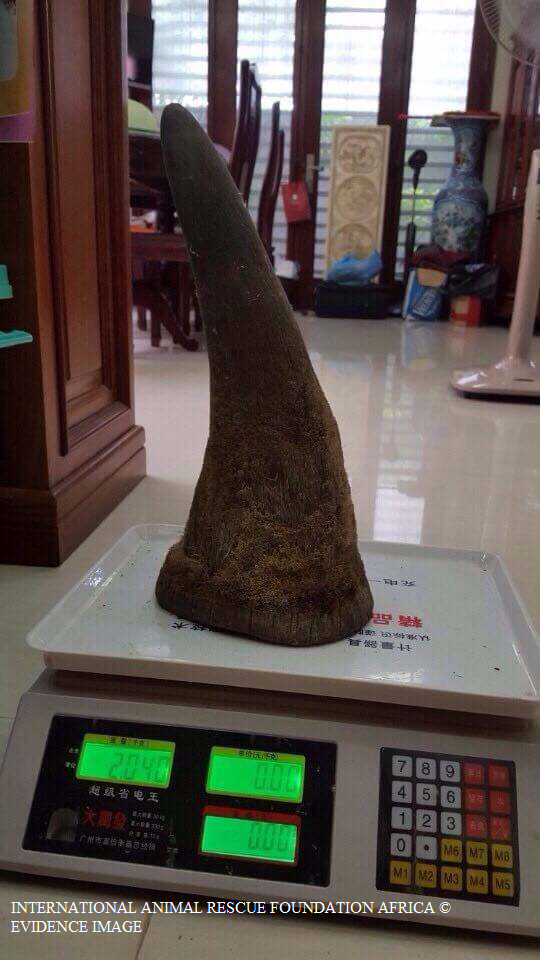
Trader weighs up a mature African rhino horn in back room. Total number of horns are worth in excess of 6 million euros.
Ivory trade was officially banned internationally back in 1989, however it hasn’t stopped these two rather sadistic and ruthless criminals from going about their trade bringing in millions of Vietnamese and Thailand dollars, most of which is traded on the US Facebook social media platform.
Furthermore it explains now where the vast majority of ivory and rhino horn is being traded. Viet Nam was virtually declared a no-rhino horn country by the BBC and the WWF back in 2014 as explained above. Unfortunately had the two investigations units bothered to look a little closer they’d have not only noticed our own concerns (with evidence being shown), but also many private online forums (including Facebook) booming in animal parts trade.
Below are numerous pieces of ivory all of which are not permitted. Investigate officers casually asked within the online chat forum if the ivory below was permitted, the [unnamed trader/peddler] was very forthcoming with his reply stating; “No, none of the ivory here is permitted”, meaning its 100% illegal to own/trade.
On immediately being made aware that the ivory was not permitted we knew instantly that these three individuals were not your average wildlife traders or syndicates. Furthermore on tracing the individuals Facebook profiles we were yet again (as explained) made aware of a female ivory trader that has been visiting Australia and Japan for unknown reasons while trading ivory online. Mrs Chung as we know her we’ve already informed the Australian Federal Police and TRAFFIC about.
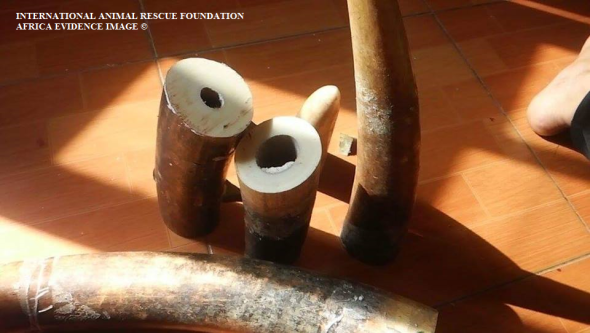
Female trader with male brags to investigative officer how ivory is easily obtainable from Benin via France.
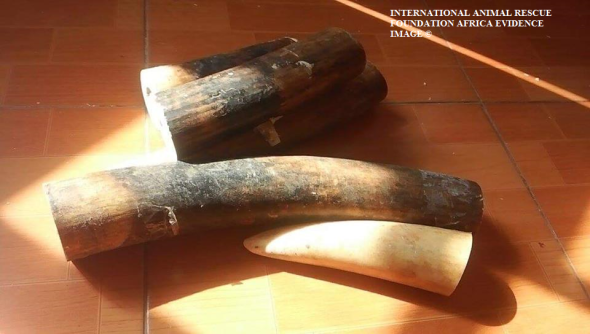
Trader informs investigate officer that ivory can be shipped into any county in the form of small firewood blocks.
The images above are just a small handful of evidence shots obtained from both the Vietnamese and Thai traders that had no worries whatsoever on displaying these items either to our investigative officers, or trading online via secure trading chatter rooms. These chatter room’s are mainly frequented by medicine men and women, and general traders of antique and non-permitted animal parts, all of which anyone can enter on Google using a simple VPN tool.
While ivory trade is not necessarily a big secret within Thailand, the sheer fact that younger people are able to obtain ivory and rhino horn in such mass quantities is extremely concerning. We also have reason to believe that some of the ivory is deriving from passages via Benin and possibly Cameroon on the continent of Africa. Our enquirers in relation to the African trail of ivory into Asia began with Mr Chan**** ***** who states he works for the Homme D’Affaire International which we believe is a made up organisation.
Chan**** *** runs a bush meat shop within Cameroon selling anything from pangolins to endangered turtles, masks and cars, and coincidentally his shop is also operational on Facebook. Had Mr Chan**** *** not bragged about ivory making its way from Benin into Vietnam we’d never have caught up again with our Asian fiends. Some of the images from Ch**** *** bush meat shop of horrors can be viewed below.
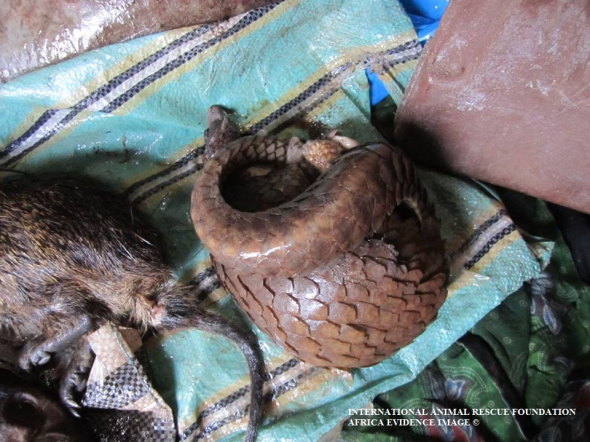
Investigators identified two species of pangolin. Both tie into the Asian and African wildlife traders.
E.A.D officers investigated the trade between the two African and Asiatic pangolins, above is that of an African pangolin which was the same species seen within the apartment of the Vietnamese citizen that offered our Singapore investigative officer rhino horn. So we’re 99% positive that all three Asian citizens have more than your normal ties to the African bush meat poacher whom we know is using a trade route from both Benin and Cameroon, onto Europe and into Asia. The African pangolin 1 of 3 identified in the apartment in Vietnam can be seen below.
African and Asian pangolins are fast becoming rare with the vast majority of Asiatic pangolins now nearing extinction. Pangolins are used within the Asian and African (TCM) Traditional Chinese Medicine trade. Furthermore the scales of the pangolins are used to make jewelry or coats. The meat of pangolins is considered a delicacy. Every year we loose more and more pangolins to poaching, and while the Asian pangolin continues to decrease in population size, the African pangolin will be placed more at risk furthermore.
Investigators were more shocked at the sheer fact that three young adults were able to obtain large quantities of illegal and legal wildlife products then freely trade them on the streets or upon their personal Facebook profile shop forums. The images below depicts large quantities of tiger teeth, bear paws, shark fin and what we believe to be tiger testicles.
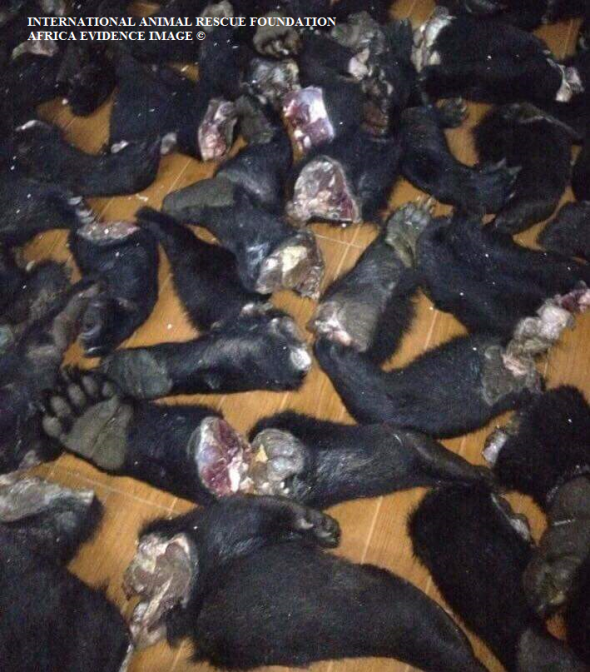
Thai and Vietnam traders offered investigators bear paw, that is used to create a fake medicine soup.
The following images below are from tigers that our International Animal Rescue Foundation Asian unit have successfully identified as Sumatran tigers listed as critically endangered on the IUCN - International Union for the Conservation of Nature’s Red List.
Please note you may find some of the images below disturbing and emotionally upsetting.
Investigative officers were told that tigers are bred within small enclosures within the family home. From there the young cubs are then killed with the adults soon after. There body parts are either stored in a freezer whole, or decapitated. On mentioning tiger skins the EAD officers were informed that some of the tigers are skinned of which their pelts can fetch anything in the region of $5,000 to $10,000 USD. Needless to say we were mortified and shocked at the traders openness and complete disregard to the fact tigers are nearing extinction within the wild.
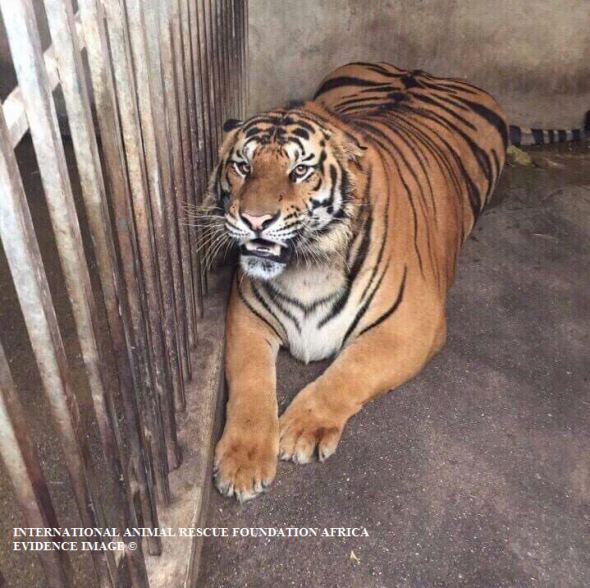
One of nine tigers that both the Thai and Vietnamese traders keep as pets. Sadly to later breed and kill for parts.
The tiger pictured above was being kept as a pet in a dark barred cage in Thailand, Bangkok. We personally believe that the three traders we’ve been monitoring since June 2015 have traded more than nine tigers (if not more). Based on the number of tiger teeth and claws we’ve estimated a probable 20-30 tigers have unfortunately met a rather gruesome and barbaric death, the sheer number of skulls, pelts, teeth, claws and tiger male testicles shows these traders are more than professional. The following images below may be upsetting to some viewers.
Despite the best attempts of law enforcement around the globe, CITES and national NGO’s pushing for stronger laws internationally and locally very little in demand and trade is being seen relating to tigers. A six month investigation of illicit wildlife trade has shown to us that trade is becoming more widespread, younger people are more involved rather than the elder generation. Regardless of education and awareness in schools the E.A.D are now picking up on average a total of 3-4 teenage dealers weekly. Many of them have ties to African bush meat traders too.
As previously explained Asiatic pangolins are nearing extinction, yet despite the amount of seizures being made, little in the way of a decrease in trade is being witnessed. Furthermore as Asian pangolin populations decreases, African pangolins will be poached to continue the trade and demand of pangolin meat, scales and medicine. None of which has any medicinal value whatsoever.
The images below were what prompted E.A.D investigative officers to then look further afield, taking the team from Thailand and Viet Nam to Africa.
From 2010 the External Affairs Department have noticed a staggering increase of tiger teeth and claws on sale via the Social Media platform identified as Facebook. There are two different types of trade. 1. Counterfeit trade which is primarily wooden carved tiger teeth and claws and 2. Real tiger teeth and claws. Like all of the evidence above and below obtained by the EAD’s Operation Trojan Horse officers, every part of the tiger is used for illegal trade.
Tiger teeth and claw necklaces are worn in Asia in the belief that such animal parts will bring the wearer power, good-luck, and ferocity. Many of the traders that we investigate often tell us that they have either found tiger teeth and claws on the ground in forests, purchased antique tiger teeth and claws from dealers. Or in this case have illegally harvested the tiger teeth and claws from home-captive bred tigers seen in the images below. The images below form part of the evidence files on the three individuals spanning from Thailand to Viet Nam.
(Please be warned the following images may be upsetting to some viewers).
Below are step by step guides that the Vietnamese trader bragged to E.A.D officers on how to harvest tiger teeth and claws. The images are upsetting and also include the skinning of tigers.
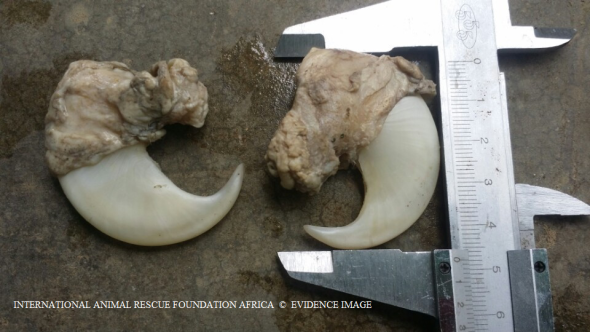
Tiger claws are measured like rhino horn and ivory. This process helps traders to price up and show legitimacy to buyers.
E.A.D officers are (as explained) unsure on the exact number of tigers that these individuals in question are breeding and trading within the home and other premises. From the evidence obtained the number of teeth and claws points to at least 20-30 tigers bred, killed and processed in Thailand and Viet Nam. An unidentified trader who’s name we cannot make public proudly shows on their Facebook page how easy it is to skin a tiger (images seen below).
Tiger testicles are also used within the Traditional Chinese Medicine trade, however this is the first time we ourselves have actually come across such tiger testicle trade (normally one views tiger penis on sale real and counterfeit). The trader[s] we’ve been investigating boasted within an online forum how tiger testicles are now more popular than tiger penis itself.
The image below shows the trader boasting how large the male tiger testicles are before he then sets about to remove, bag and weigh up the testicles for sale. Its believed the testicles ‘may’ be transported illegally into China or onto wealthy Viet Nam/Chinese restaurants where the soup of tiger testicles is ‘allegedly’ known as a delicacy and (aphrodisiac soup). None of which holds any medicinal evidence whatsoever.
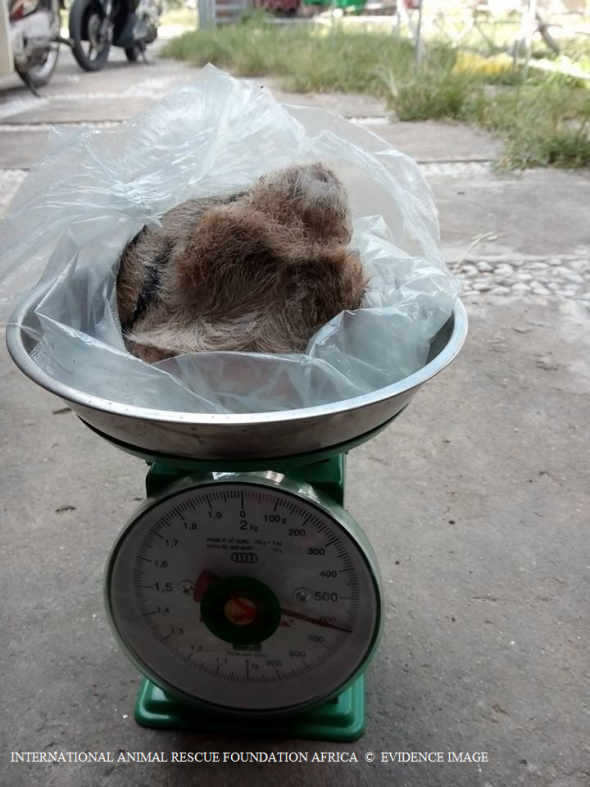
Tiger (testicles) weighed for sale. The testicles will most likely be used to produce tiger testicle soup.
Back in 2013 the Humane Society of the United States stated a total of twenty seven countries had outlawed the sale and trade of shark-fin for the production of shark-fin soup. One would then be led to believe that since this mass outlawing and bans on trade, it would therefore heavily restrict shark poaching and trade of shark-fin soup. In Thailand and Viet Nam it appears not to be the case (both countries have no bans in place).
Unfortunately when E.A.D officers investigated the traders herein this article, we uncovered more than enough shark-fin trade to prove that neither laws or outlawing of the trade is having any real effect on stopping or restricting the trade of shark-fin. On speaking to the unnamed trader within a forum online for TCM trade, the individual boasted how easy it was to obtain shark fin, an transport that into Asian and North American countries. The images below show shark-fins drying at the traders apartment in Thailand and Vietnam.
International Animal Rescue Foundation Africa and two investigation units aligned with us; External Affairs Unit and Operation Trojan Horse (Cyber Crimes Division) have been tracking countless illegal wildlife traders all over the world since IARFA established the (Cyber Crimes Unit). While the evidence above may shock many, its little compared to what we locate every month. Investigative officers work under immense pressure, stress and must work fast to ensure that traders once located are reported to the relevant agencies.
On the 23rd December 2015 Interpol’s Environmental Crime Unit and the Cyber Crimes Serious Investigation Team were alerted to our findings, while we can state now that our investigation which we have decided to make public has shown much data on trade. The investigation is considered normal due to the size. The most shocking aspect of this investigation was the fact that our younger generation are more active now within this illicit trade. That in itself poses some rather large problems and concerns, and one that now needs addressing at both government and educational level.
As of today 29th December 2015 this investigation has since been increased to “extremely urgent”, and the need to locate these men and women is critical before any further animals die, in Asia and Africa. All three individuals have shown a complete disregard to the fact rhino’s, elephants and tiger populations are losing ground throughout the Asian and African continent. Sharks and pangolins are also nearing extinction too. Trade and demand as explained has skyrocketed online to worrying levels, yet slowly vanishing on the ground.
Thailand is the new hub for rhino horn trade and Facebook and other social media platforms are being exploited to trade just about anything wildlife, regardless of such products being illegal. Trade and demand on the ground has also changed from elder to younger individuals (as explained) which is very worrying. One of the largest trading countries that we are seeing to date, is that of Thailand, which would explain why the BBC back in 2014 couldn’t locate much in the way of rhino horn (in Viet Nam).
Since General Prayut Chan-o-cha took over running of Thailand back in 2014 wildlife trade has skyrocketed. While we cannot prove increasing trade has anything to do with General Prayut Chan-o-cha, it just seems too coincidental that a sudden spike of rhino horn, ivory and other wildlife products has shot through the roof.
Facebook was where this investigation ended prompting us to then send all evidence to Interpol. Facebook hosts some 1.32 billion users worldwide, 32% of which use cell phones to login into the United States platform, thus making it difficult to locate traders and dealers.
International Animal Rescue Foundation Africa have been lobbying Facebook since the start of the year, to implement new terms and conditions to heavily disrupt this trade and demand. A petition that has amassed over five thousand signatures can be signed here and shared. However we’re not holding our breath. Should the Facebook platform and its CEO Mark Zukerburger not implement new polices on trade and demand of illicit wildlife products we will unfortunately soon see many species of animals pushed into extinction. Ivory and rhino horn trade has exploded to worrying new levels. Rhinos, elephants and tigers are being poached moreover, and the internet as well as ground trade is awash with anything from drugs, firearms, child trafficking (most of which links back to illegal wildlife trade).
One of the men that is pictured above is responsible for the trade of wildlife parts above, he has since been reported to Interpol along with his partner and other associates whom we have been investigating since June-December 2015. The individual above is believed to be in Hanoi (Nguyen), or Ho Chi Minh City, possibly with an accomplice. His name and other accomplices we cannot make public as yet. The image is recent.
A more closer image of the individual and the female is located below. We believe based on evidence obtained that the male is using the females account on Facebook too.
May this be a stark warning to all wildlife traders out-there. International Animal Rescue Foundation, External Affairs and Operation Trojan Horse will eventually catch up with you. If we catch you trading in wildlife products we will monitor you on the ground and online. From there we will press for your arrest and detention.
Within the past year Interpol has been escalating their new project identified as OPERATION WORTHY II Operation Worthy is targeting many individuals involved in international and local serious crime.
Updates on this case will follow as and when we’re updated. Thank you for reading.
Chief Environmental Officer (CEO)
Director
If you would like to make a small donation to our organisations investigations department please click the link >here< Your donation funds 10% of our environmental projects, while we ‘self fund’ the remainder 90%. Please contact us via the email above for further information. You are not at liberty to donate, nor do we beg.
“REPORT WILDLIFE CRIME TODAY”
Endangered Species Monday: Alouatta belzebul.
Endangered Species Monday: Alouatta belzebul
This Monday’s endangered species article from the (Endangered Species Watch Post) focuses on the Red Handed Howler Monkey of which is listing near to endangerment. (Image Red Handed Howler Monkey)
Generically identified as Alouatta belzebul back in 1766 by Professor Carl von Linnaeus (1707 – 10 January 1778), also known after his ennoblement as Carl von Linné was a Swedish botanist, physician, and zoologist, who laid the foundations for the modern biological naming scheme of binomial nomenclature.
Listed as vulnerable the species is endemic to Brazil (Alagoas, Maranhão, Pará, Paraíba, Pernambuco, Rio Grande do Norte, Sergipe and Tocantins). Populations are currently on the decline of which its very likely the species will be re-categorized as endangered within the next five years, if not sooner.
A. belzebul is said to be extremely common in some areas such as Marajó however is noted as rare within the Atlantic Forest portion of the range known as; Rio Grande do Norte, Alagoas, Paraíba and Pernambuco. Last survey census’s reported the species to be inhabiting at least ten isolated locations of which two hundred individuals remain in each plot.
International Animal Rescue Foundation Brazil have for the past three years been conducting surveys within the area will be submitted to the (IUCN). Furthermore the Environmental Protection Unit now re-based in Londrina are working with local communities, hunters and farmers within the A. belzebul range to preserve commonly known species of monkey, birds, amphibians and flora within the region.
IARFB are also currently conducting investigations to locate where sugar cane is being exported too and used within from the A. belzebul’s region. Its believed that America, Mexico, South America, and Europe are purchasing large sugarcane exports from the region. Tesco, J.S Sainsbury’s, Cooperative Food Group, Asda, Walmart, Woolworths and Spar have all been noted on suppliers exports from the regions. Aldi, Lidl, Quick-Save, Budgens have been ruled out. We are least impressed though with J.S Sainsbury’s name written on export documents of sugar cane from the region.
Within the ten isolated locations six populations are known to reside in Paraiba, two in Rio Grande de Norte, one in Pernambuco, and one in Alagoas. The largest population in the Atlantic Forest is in Pacatuba in Paraiba with about 80 animals. There have been five registered local extirpations from forest fragments in the last 50 years.
Little known conservation actions are under way within their endemic region and as explained populations are decreasing and nearing endangerment. A. belzebul is listed within the family of Atelidae which is one of the very first five of new recognized ‘new world monkeys’. Its quite likely that new sub-species of the Red Handed Howler Monkey may be located as well as newer species of ‘new world monkeys’ too within the coming years. Only five years ago did scientists locate over 100,000 new species within the Yasuni National Park, Ecuador so in reality anything is possible.
The Atelidae family host howler, spider, woolly and woolly spider monkeys (the latter being the largest of the New World monkeys). They are found throughout the forested regions of Central and South America, from Mexico to northern Argentina.
When the species is not foraging on the ground floor they can normally be found resting in the canopies of trees at a height of some sixty feet. Social groups normally consist of seven to twenty members that will host mature males, females juveniles and infants. Males normally take lead of the pack or (troop).
These large and slow-moving monkeys are the only folivores of the New World monkeys. Howlers eat mainly top canopy leaves, together with fruit, buds, flowers, and nuts. They need to be careful not to eat too many leaves of certain species in one sitting, as some contain toxins that can poison them. Howler monkeys are also known to occasionally raid birds’ nests and chicken coops and consume the eggs.
Image: Adult Red Handed Howler Monkey.
Howlers are the only New World primates which regularly include mature leaves in their diet, although softer, less fibrous, young leaves are preferred when they are available. Their folivory and ability to eat mature leaves is undoubtedly one of the keys to their wide distribution and the wide variety of vegetation types they inhabit.
Mature fruit is the other important food item, especially wild figs (Ficus) in many regions, but they also eat leaf petioles, buds, flowers (sometimes seasonally very important), seeds, moss, stems and twigs, and termitaria. The diet of two A. belzebul groups in the Caxiuanã National Forest was studied by Souza et al. (2002). They were largely folivorous but would switch to fruits whenever available, especially during the wet season.
Size:
Adult male weight 7.27 kg (n=27),
Adult female weight 5.52 kg (n=26)
Adult male weight 6.5-8.0 kg (mean 7.3 kg, n=27),
Adult female weight 4.85-6.2 kg (mean 5.5 kg, n=26) .
Threats
Listed on Cites Appendix II there are few threats associated with the species. Nevertheless they still remain and if left unchecked can rapidly increase placing the new world monkey in danger of extinction.
In the Amazon, the species is widespread, although they are hunted. The Amazon populations have suffered severely from forest loss throughout their range in southern Pará over the last decade. In the Atlantic Forest population, the major threat is the fragility of the remaining small forest patches to stochastic and demographic affects (habitat loss and fragmentation has been mainly due to sugar-cane plantations).
Please share and make aware the Red Handed Howler Monkey’s plight. Tip: Check sugar products from local shops and hypermarkets to ensure your not aiding the destruction of their natural habitat via your sugar purchase. Check your local candy and other shopping supplies. If necessary contact companies politely asking where they are obtaining the sugar products from. Never give up.
Thank you for reading.
Dr Jose C. Depre.
Environmental and Botanical Scientist.
Chief Executive Officer
Endangered Species Friday: Ailurops ursinus
Endangered Species Friday: Ailurops ursinus
A. ursinis was identified back in 1824 by Dutchman Dr Coenraad Jacob Temminck - (31 March 1778 – 30 January 1858) was a Dutch aristocrat, zoologist, and museum director. Listed as vulnerable the species is endemic to Indonesia on the island of Sulawesi of which there remains limited data on this rather fine specimen of marsupial that resides in the family phalangeridae. (Image: Young Bear cuscus)
Populations of the (Bear cuscus) as its commonly known continue to steadily decline even though there are limited - conservation measures in place protecting the species (There remains as yet no data on population size). The Bear cuscus has practically gone extinct within the Tangkoko-DuaSudara Nature Reserve of which a staggering 95% decline has been recorded within the region alone of which the primary threat within the nature reserve is hunting and trade for pets.
North Sulawesi has also seen a staggering decline identical to the population decreases documented within the Tangkoko-DuaSudara Nature Reserve too. Yet again hunting and the illegal pet trade are very much responsible, and may very well within the next five to ten years lead to a complete extinction occurring.
As much as I myself hate to say it I am pretty certain from viewing statistical data past and present that extinctions are going to occur even sooner than predicted. Should extinctions occur it proves yet again that poaching is having a disastrous effect onto just about every African and Asian species known.
Habitat loss and forest clearance are all playing a pivotal roll at decreasing populations of this beautifully attractive marsupial. As a conservation and botanical scientist sometimes I wonder to oneself why we even bother to help species of animals and flora when some governments show no support, or respect whatsoever in our quest to protect and serve. Then I remember, my children and their children’s heritage is just as important as mine and the teams fight to protect.
Bear cuscus are known as arboreal marsupials meaning, they mostly thrive and spend the majority of their peaceful and playful lives within trees and dense forest. Unfortunately these forests and trees are slowly dwindling in size primarily for land clearance to support local farms and communities and, not forgetting slash and burn activities. I cannot begin to imagine what these creatures think and feel when destructful and greedy humans destroy their homes and pastures. The feeling of not-knowing-when such harm is to be inflicted must be terrorizing for them.
The genus contains the following single species that is known to be related to the Bear cuscus; Ailurops melanotis that inhabits the Salibabu Island listed as (critically endangered) and endemic to Indonesia on the island of Sulawesi. Typically found in undisturbed tropical lowland moist forests, this species does not readily use disturbed habitats, thus it is not usually found in gardens or plantations. It is a largely diurnal and as explained a arboreal species that is often found in pairs. Diet usually consists of a variety of leaves, preferring young leaves, and like many other arboreal folivores it spends much of its day resting in order to digest similar to the Koala bear of Australia.
Image: Bear cuscus relaxing in the canopy of Tangkoko
The only known conservation actions that are taking place are within in few protected areas, that include: Tangkoko-DuaSudara Nature Reserve, Bogani Nani Wartabone National Park, Lore Lindu National Park, Morowali National Park, and a host of forest reserves. This species is nominally protected by Indonesian law. Unfortunately even though the species is protected the illegal pet trade still continues of which I myself have on many occasions located small pet shops in Indonesia selling Bear cuscus from rusty, cramped cages.
Threats
The species is threatened by habitat loss due to clearance of forest for small-scale agriculture and through large-scale logging. It is also heavily hunted by local people for food, and collected for the pet trade. Cuscus hunting forays are often planned before special occasions (e.g., birthday celebrations) in order to provide future guests with the greatly appreciated meat. (These inferences are based on some six months of residence among Alune villagers in 1993–95, which included participation in forest activities and standard ethnographic data collection.)
Thank you reading.
Dr Jose C. Depre
Environmental and Botanical Scientist.
Please donate by clicking the link below and help the board of directors establish their Viet Nam pet and wildlife rescue and rehabilitation clinic today. Without your help we cannot take dogs, cats and small bush meat animals of the streets and into safety. No donation is to small and all donations are greatly and kindly appreciated.
Please donate here:
https://www.facebook.com/SayNoToDogMeat/app_117708921611213
Stay up to date with our SNTDM newsletter:
https://www.facebook.com/SayNoToDogMeat/app_100265896690345
Thank you.
Stay up to date with African and international environmental and animal welfare affairs here:

